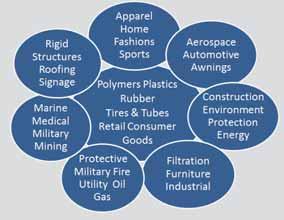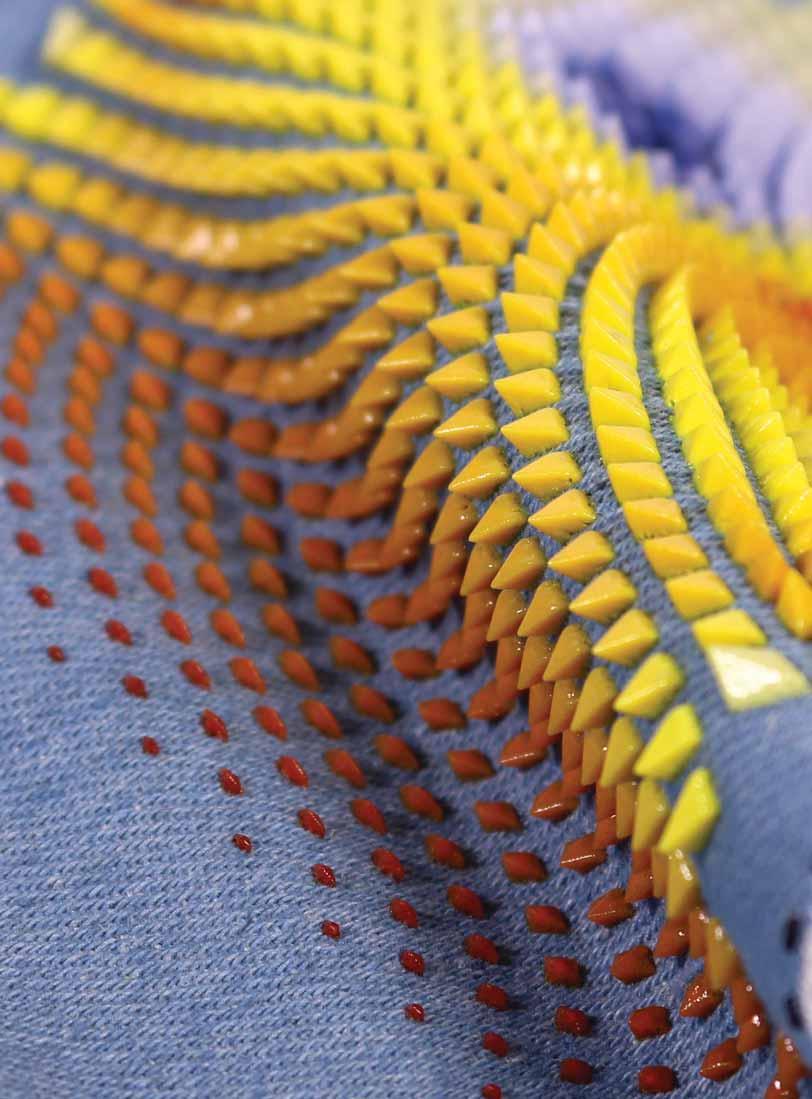






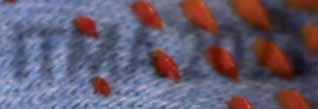
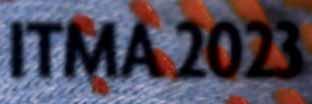





QFOM: Tecasafe®360+ Seal Of Cotton Turns 50 Fluorescent Color Matching July/August 2023 y g Founded 1868
In The News Companies Taking Action ITMA 2023 Initial Impressions & “Cool” Things On Display Show Preview Advanced Textiles Expo 2023
PFAS





including translation into other languages, reserved. Subscription rates for one year are: $65 (US); $85 (Canada and Mexico); $130 (Other International). Single copy rates are: $15 per copy. All prices are in U.S. dollars and all orders must be prepaid. Questions may be submitted to jdavis@textileworld.com. To obtain electronic copies of print articles, please contact ProQuest at www.proquest.com. To obtain microform copies, please contact NA Publishing at www.napubco.com.
POSTMASTERsend address changes to: Textile Industries Media Group, LLC, PO Box 683155, Marietta, GA 30068. Send Canadian address changes to: Textile World, c/o The Mail Group, P.O. Box 25542, London, ON N6C 6B2, Canada. Customer #7007632 Publications Agreement #40612608.



Features 8 Advanced Textiles Expo 2023 Preview 34 Card C 81: Maximum Use Of Carding Area Rieter’s new C 81 carding machine features intelligent sensors for enhanced production and quality. Departments 4 From The Editor 6 News 35 People 36 Bulletin Board 37 Calendar 38 Quality Fabric Of The Month ON THE COVER: An eyecatching display at ITMA2023 featured directto-textile 3D printed fabrics made using Israel-based Stratasys Ltd.’s 3DFashion™ technology, which includes its J850 TechStyle™ 3D printer and software to turn 2D ideas into 3D printed elements. 24 PFAS In The News As the PFAS debate continues, textile companies are taking action and moving towards a future without PFAS. 28 News Dyeing,Printing & Finishing Fiber World 20 News 22 Cotton Incorporated Celebrates 50 Years Of The Iconic Seal Of Cotton 20 News Nonwovens/Technical Textiles Post-ITMA2023 Coverage 10 ITMA2023 Review: Postive Energy And A Resounding Success 14 ITMA2023 Edition — Just Some Of The “Cool” Things On Display Technology highlights from the industry’s largest textile machinery show mostly focused on sustainability. Knitting/Apparel 28 News 29 What’s Now And Next In Sustainable Textiles The textile industry is experiencing a shift towards sustainability driven by demand and the urgent need to address environmental challenges. 32 Bright Ideas For Fluorescent Color Matching Matching florescent hues can be challenging, but digital strategies can help manage the process. July/August2023 TextileWorld.com Founded 1868 A Publication VOL. 173, No. 4 / TEXTILE WORLD (ISSN 0040-5213) is published bimonthly by Textile Industries Media Group, LLC, PO Box 683155, Marietta, GA 30068, and incorporates Modern Textiles, Textile Industries, Fiber World and Knitting/Apparel magazines, which remain the property of Textile Industries Media Group, LLC. Copyright 2023, Textile Industries Media Group, LLC Title registered with the U.S. Patent Office. All rights,
From Editor The PFAS Anyone?
MManufacturers,brands and retailers are getting the message.Consumers are interested and want to know more about the products in their life.From the food they eat to the clothes they wear, consumers want to know more than ever where products come from,how wholesome the ingredients are and what impact they have on the environment — both as they are produced and after they are consumed.
One doesn’t have to look back too far to see how dramatic this transformation has been.Who knew the tree hugging, Birkenstock wearing,granola eaters of the late-1960s were ahead of their time?
The mainstreaming of environmental awareness demands manufacturers,brands and retailers get on board or be lost,awash in the green tide.
It wasn’t that long ago the concept of sustainability was something new and it established a need for transparency throughout supply chains.
Early pioneers — like Ray Anderson,the founder and chairman of modular carpet manufacturer Interface Inc.— put the impact of industry on the environment at the center of his company’s culture.Sustainable production and consumption were essential to Anderson, who passed away in 2011.The Ray C.Anderson Foundation was established in his memory to perpetuate Anderson’s notion of“ … businesses doing well by doing good,”and continue his legacy.The foundation notes,“It’s these noble qualities of advancing knowledge and innovation around environmental stewardship and sustainability that recognized Ray as a pioneer in industrial ecology.”
Along the way,the industry learned that cost saving initiatives that reduced water, power and chemical consumption were not only good for business and the environment, but also curried favor with brands and
retailers. At the time,who knew brands were even interested?
Today,communicating the environmental impact of products has become an integral part of marketing,branding and personal relations.
Industry response to downstream industry demands couldn’t be more clearly demonstrated than in the “PFAS In The News” feature in this issue of Textile World.Executive Editor Rachael Davis explores the multifaceted debate of the use of per- and polyfluoroalkyl substances (PFAS),particularly in textiles.But PFAS chemistry is everywhere and used in countless consumer and industrial applications.
Known for conferring performance properties as a repellent finish and more,chemistry based on the powerful chemical bond between fluorine and carbon molecules was a magical discovery that led to the development of thousands of chemical compounds.
Now,government regulation,industry and the consumer are driving innovation and change in the world of PFAS chemistry. An informed debate is essential here because not all PFAS are the same.And it can be argued that in some applications PFAS chemistry is necessary to achieve the performance required for some very highly technical products.
Real change is happening in products that are less performance oriented or those that can achieve the necessary performance attributes with alternative chemistries.
A rush to judgment and government regulation is concerning,but pivoting to less concerning chemistries when possible may not be such a bad outcome.
James M. Borneman jborneman@TextileWorld.com

APublication
EDITOR IN CHIEF James M. Borneman
EXECUTIVE EDITOR Rachael S. Davis
TECHNICAL EDITORS Dr. Lisa Parillo Chapman
Dr. Peter J. Hauser
Dr. Trevor J. Little
Dr. William Oxenham
Dr. Behnam Pourdeyhimi
Dr. Abdel-Fattah Seyam
Dr. Andre West
CONTRIBUTING EDITORS Jim Kaufmann
Stephen M. Warner
INTERNET CONTENT EDITOR Rachael S. Davis
CIRCULATION MANAGER Julie K. Brown-Davis
ADVERTISING BUSINESS MANAGER Denise Buchalter
ART & PRODUCTION MANAGER Julie K. Brown-Davis
OWNER/PUBLISHER James M. Borneman
ADVERTISING REPRESENTATIVES
UNITED STATES/CANADA Turner Marketing & Media, LLC


+864-594-0921 • sturner@textileworld.com
MEXICO, CENTRAL & SOUTH AMERICA Virgilio L. González
+ 58-412-622-2648 • Fax +58-212-985-7921 • vlgonzalezp@gmail.com
EUROPE (except ITALY) Sabine Dussey
+49-171-5473990 • sabine.dussey@dussey.de
ITALY Ferruccio & Filippo Silvera
+39-022-846716 • Fax +39-022-8938496 • info@silvera.it
ASIA James M. Borneman
+678-483-6102 • jborneman@textileworld.com
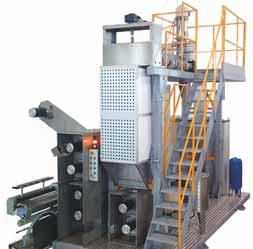

INTERNET & CLASSIFIEDS OPPORTUNITIES Julie Davis
+678-522-0404 • jdavis@textileworld.com
PO Box 683155 | Marietta, GA 30068, USA
Telephone +678-483-6102 | www.TextileWorld.com
Acting USTR Visits North And South Carolina Textile Companies
Acting Assistant U.S. Trade Representative (USTR) for Textiles
Dr.Laurie-Ann Agama recently wrapped up a three-day visit to stateof-the-art U.S.textile manufacturing facilities in North and South Carolina. Dr.Agama was joined by USTR textile trade officials as she toured Glen Raven, Barnet,Standard Textile, Parkdale Mills,Beverly Knits,Gildan and Unifi. The tour ended with an industry roundtable discussion with key textile executives that was hosted by Unifi in Greensboro, N.C.Executives spoke about critical policies such as the importance of maintaining the yarn forward rule of origin in the Dominican RepublicCentral America Free Trade Agreement and upholding the Buy American and Berry Amendment government procurement policies, among other topics.
“We deeply appreciate Assistant USTR Agama’s visit to the heart of the U.S.textile industry in North and South Carolina this week to meet with U.S.textile executives and experience first-hand the breadth of the industry’s innovation,advanced sustainability practices, capital investments and critical contributions to local economies and the U.S.economy as a whole,”
said Kim Glas,president and CEO of the National Council of Textile Organizations.“We look forward to working closely with Dr.Agama,the USTR textile team and U.S.Trade Representative Ambassador Katherine Tai to advance policies that provide incentives for onshoring and nearshoring production and bolstering the industry’s competitiveness, while enforcing policies that address illegal trade practices that undermine this industry,”Glas added.
“The U.S.textile industry has always been resilient,innovative,and a driving force of our nation’s competitiveness,” said Dr.Agama.“For USTR, this local engagement and conversations underscore our need to create trade policies that put workers first and promote inclusive economic growth.”
Glen Raven To Sell Strata Geosynthetics
Glen Raven,Burlington, N.C.,reports it has reached an agreement to sell its Strata geosynthetics products and related construction business to India-based Hella Infra Market Pvt.Ltd.“This move enables us to focus on expanding our leadership in Glen Raven’s core markets and extending our brand into new spaces,”said Glen Raven CEO Leib Oehmig.
Glen Raven acquired Strata in 2007 as part of a larger acquisition and
Fiber Industries Becomes Darling Fibers, Establishes Darlington Green
Domestic polyester staple fiber producer Fiber Industries,Darlington,S.C., has rebranded as Darling Fibers.The company also has established Darlington Green,a sustainability hub for textiles and packaging manufacturing and related research,development, and innovation.
“We are aligning our brand and purpose with our potential,”said Don Bockoven,CEO of Darling Fibers.“Our goal is to build on our rich heritage as an organization by fostering innovation and spurring productivity while preserving and enhancing the environment.We envision accelerating the growth and resilience of America’s textiles and packaging industries through collaboration and partnership.”
“Darlington Green is in active discussions with partners to co-locate manufacturing and pilot new products and emerging recycling technologies, harness our collective expertise and revitalize the U.S.polyester and plastic industry,”said
worked to expand its global presence with partner Strata Geosystems India Pvt.Ltd.The sale is not expected to impact any jobs at Strata and the company’s global operations should continue without interruption.Financial terms of the agreement were not disclosed.
Darling Fibers envisions its 765-acre campus as a hub for sustainable innovation.The company is forming an advisory board comprised of community and industry stakeholders to establish a formal mission and vision for Darlington Green with the goal of bringing together manufacturers, state and local governments,academic institutions,entrepreneurs and other interested parties to invigorate and advance sustainability efforts.
“More than 380 million tons of plastic waste was generated in the world last year and only 10 percent of that plastic was recycled,with the rest incinerated,landfilled or dumped in our oceans,”Bandy added.
“We see Darling Fibers and Darlington Green as being at the forefront of finding solutions and capitalizing on opportunities presented by these profound challenges.”
“We are proud of the tremendous success of Strata as part of Glen Raven and the work of the outstanding team that supports the business,”said Oehmig.
“Aligning the business with a construction-centric organization positions Strata and its associates for continued growth and success.” TW
News 6 JULY/AUGUST 2023 TextileWorld.com
George Bandy Jr.,chief sustainability officer, Darling Fibers.
Be confident*



* and experience the radical digitization and ease of use of the all-new, revolutionary Ultimax.





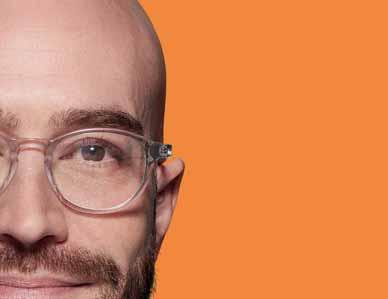
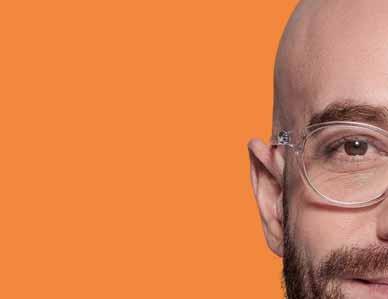
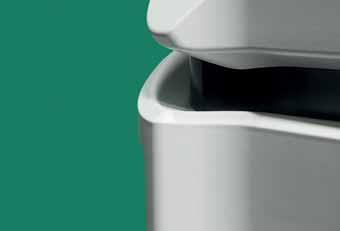

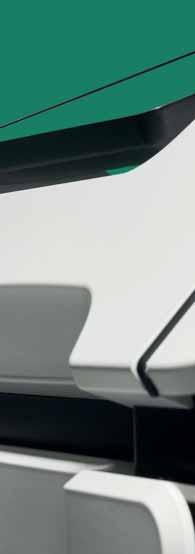

www.picanol.be
a-Puppy Fundraising booth, as well as the Demo booth —a hands-on educational space for makers and materials suppliers.
Advanced Textile Expo’s Annual Fun Run/Walk will take place Thursday morning at 7:15 a.m. Participants will be led by experienced locals on a walk or run through Orlando. Runners can choose a pace group and distance and then enjoy the views.
Nighttime Fun
Advanced Textiles Expo Is Orlando Bound
IFAI Expo formally adopts new Advanced Textiles Expo name for 2023 edition of the show, and will collocate with the Sun Shading Expo North America.
TThe Roseville, Minn.-based Advanced Textiles Association (ATA) is gearing up to host its first Advanced Textiles Expo — the new name for IFAI Expo that reflects the organization’s 2022 rebranding. The 2023 edition of the expo will take place in Orlando, Fla., at the Orange County Convention Center. Education sessions begin October 31 and the show floor is open November 1-3, 2023.
“We are delighted to be back in Orlando, Florida, for the launch of our newly rebranded Advanced Textiles Expo,” emphasized Steve Schiffman, ATA president and CEO. “Along with a new name we are also adding new programming to enhance engagement and value for attendees and exhibitors. This programming includes a ‘Next Generation’ networking event on the show floor, reimagined Demo area with more hands-on demonstrations, demonstrations in exhibitor booths and two deep dive workshops on Emotional Intelligence and Mastering Leadership for the Modern Sales Team.”
What To Expect
The show will again collocate with Messe Stuttgart’s Sun Shading Expo North America to bring a whole new dimension of attendee and exhibitor value to Advanced Textiles Expo, according to Schiffman. The collocation of the events for these two complementary industries offers value in terms of connecting with customers, suppliers, end-product manufacturers, and industry counterparts, as well as providing growth opportunities. Attendees have access to both events including the combined show floor, show floor education, keynote speakers and networking receptions. The only exceptions are Advanced Textile Expo’s classroom education, which is only open to Advanced Textile Expo registrants; and Sun Shading Expo classroom education, which is only open to Sun Shading Expo registrants.
The show floor will feature the ATA Hub, which is a great place to learn more about ATA or join a member division open meeting. Also on the show floor, ATA announced the return of the Adopt-

At the end of the first day, Advanced Textile Expo will host an official opening reception from 5-6 p.m. ATA invites all participants to mix and mingle while enjoying some refreshments and conversation to wrap up the first day of the show. The reception is included with all registration types.
Those who opt to purchase a separate ticket when registering can move from the opening reception to Industry Night, which this year will be held at the Blake Shelton’s Ole Red starting at 7 p.m. As always, live music will be provided by ATA member band Hangin’ by a Thread.
Education
Those who register for the basic show floor pass will have access to more than 10 hours of campfire education sessions that will be hosted on the show floor. The campfire sessions are broken into three categories — Emerging Technologies, Shade and Weather Protection, and Specialty Fabrics — and will be held in separate areas of the show floor.
The Expo Plus registration option covers the show floor with campfire sessions, as well as more than 15 hours of classroom sessions covering advanced textiles, specialty fabrics, shade/weather, marine fabricators and general business topics. Attendees who register for the All Access pass gain access to the Emerging Technologies Conference that starts one day before the show floor opens, in addition to the Expo plus classroom education and campfire sessions.The Emerging
8 JULY/AUGUST 2023 TextileWorld.com
ADVANCED TEXTILES EXPO 2023 PREVIEW
TW Special Report
ADVANCED TEXTILES EXPO 2023 PREVIEW
Technologies Conference begins with a luncheon and plenary session on October 31; followed by 50minute-long sessions on topics such as e-textiles, advanced manufacturing and applications. The conference continues on November 1 and 2 with sessions held in the morning. A complete list of conference sessions will be available on the event website closer to the show date.
ATA also is offering Deep Dive Workshops, brought back by popular demand. There are two options in 2023 that will be held on Tuesday, October 31 from 1-4 p.m. Option one, Mastering Leadership for the Modern Sales Team, will be hosted by Toby Payne, a partner, sales trainer and consultant with Sandler Training. The session will cover understanding your sales people and unlocking their potential; streamlining the onboarding process; creating a culture of accountability to empower salespeople; and sustaining motivation.
Deep Dive Workshop option two on Emotional Intelligence Training will be hosted by Dr. Melissa Furman, owner/consultant with Career Potential LLC. The workshop is designed to provide participants with tools and strategies to enhance their own emotional intelligence to impact decision-making, teamwork, productivity, stress management and problem solving in a positive way; as well as tools to manage and develop emotional intelligence in others. The session includes an emotional intelligence assessment that needs to be completed prior to the session.
Keynote Speaker
ATA has selected Jeff Butler as this year’s keynote speaker. This workplace expert’s keynote, titled “Building and Effective Multigenerational Workforce,” will focus on work with and managing various generations. TW
For more information about Advanced Textiles Expo and to register, please visit advancedtextilesexpo.com.
Advanced Textiles Expo 2023 Schedule Highlights
Unless otherwise noted in the agenda, all activities will take place at the Orange County Convention Center
*All Access Registration is required to attend the Emerging Technologies Conference and grants access to all Expo Education and Show Floor features
**Expo Plus Registration is required to attend industry classroom education and does not include the Emerging Technologies Conference.
***Requires an add-on purchase during registration
(information accurate as of TW ’s press time)
Tuesday, October 31 Onsite Registration/Check-In Open. . . . . . . . . . . . . . . . . 7:30 a.m.-5:30 p.m. Exhibitor Install. . . . . . . . . . . . . . . . . . . . . . . . . . . . . . . . . . 8:00 a.m.-5:00 p.m. * Emerging Technologies (ET) Conference Welcome Lunch & Plenary Session. . . . . . . . . . . . . 11:30 a.m.-12:45 p.m. *** Deep Dive Workshops. . . . . . . . . . . . . . . . . . . . . . . 1:00 p.m.-4:00 p.m. * Emerging Technologies (ET) Conference Education. . . . . 1:00 p.m.-5 p.m. * Emerging Technologies Conference Networking Reception. . . . . . . . . . . . . . . . . . . . . . . . . 5:00 p.m.-6:30 p.m. Wednesday, November 1 Onsite Registration/Check-in Open. . . . . . . . . . . . . . . . . 8:00 a.m.-5:00 p.m. Advanced Textiles Expo Kick Off with Opening Keynote and ATA Annual Meeting. . . . . . . . . . . . . . . 8:30 a.m.-9:45 a.m. Show Floor Open. . . . . . . . . . . . . . . . . . . . . . . . . . . . . . 10:00 a.m.-5:00 p.m. ** Emerging Technologies Classroom Education. . . . . . 10:00 a.m.-11:50 a.m. ** Industry Classroom Education. . . . . . . . . . . . . . . . . 10:00 a.m.-11:50 a.m. Show Floor Education . . . . . . . . . . . . . . . . . . . . . . . . . . . 10:30 a.m.-4:30p.m. Division Update Meeting. . . . . . . . . . . . . . . . . . . . . . . . . . 1:00 p.m.-1:45 p.m. Expo Opening Reception. . . . . . . . . . . . . . . . . . . . . . . . . 5:00 p.m.-6:00 p.m. *** Industry Night at Ole Red Orlando. . . . . . . . . . . . . 7:00 p.m.-9:00 p.m.. Thursday, November 2 *** Fun Run/Walk. . . . . . . . . . . . . . . . . . . . . . . . . . . . . . . . . . . . . . . 7:15 a.m. Onsite Registration/Check-in Open. . . . . . . . . . . . . . . . . 8:00 a.m.-5:00 p.m. ** Emerging Technologies Classroom Education. . . . . . . 9:00 a.m.-11:50 a.m. ** Industry Classroom Education. . . . . . . . . . . . . . . . . . 9:00 a.m.-11:50 a.m. Show Floor Open. . . . . . . . . . . . . . . . . . . . . . . . . . . . . . 10:00 a.m.-5:00 p.m. Show Floor Education. . . . . . . . . . . . . . . . . . . . . . . . . . . 10:30 a.m.-4:30 p.m.. Friday, November 3 Onsite Registration/Check-in Open. . . . . . . . . . . . . . . . . 8:00 a.m.-2:00 p.m. Show Floor Open. . . . . . . . . . . . . . . . . . . . . . . . . . . . . . 10:00 a.m.-2:00 p.m. Exhibitor Dismantle. . . . . . . . . . . . . . . . . . . . . . . . . . . . . 2:00 p.m.-8:00 p.m..
Textile World JULY/AUGUST 2023 9
ITMA 2023: Positive Energy And A Resounding Success
ITMA 2023: Positive Energy And A Resounding Success
AApparently nothing — not even a pandemic, supply chain disruptions, and global banking crisis, among other issues — could keep the textile industry from showing up at ITMA 2023, the industry’s quadrennial trade show owned by the European Committee of Textile Machinery Manufacturers (CEMATEX).

Exhibitor numbers — 1,709 from 47 countries — came close to 2019’s record-breaking number of exhibitors. Despite the slightly lower number of exhibitors compared to 2019, the net exhibition space increased by 3 percent to 118,300 square meters.
A total of 867 exhibitors, or 63 percent of the net exhibit space was occupied by companies from CEMATEX countries — Italy, Spain, the United Kingdom, the Netherlands, Switzerland, Belgium, Sweden, France and Germany. Italian exhibitors formed the largest contingent with 422 companies, and also occupied the largest amount of space at 30 percent. Germany followed
ITMA 2023.
By Rachael S. Davis, Executive Editor
with 198 exhibiting companies in 15 percent of the net exhibit space. The third largest group of exhibitors was from Turkey with 191 companies occupying 12 percent of the show floor space.

“Interestingly, we also welcomed new exhibitors from Tunisia, Estonia, Ireland, Norway, Ukraine, and as far as Panama, Peru and Honduras,” said Ernesto Maurer, CEMATEX president. “Due to high demand, about 150 applicants were unable to be accommodated as some sectors were sold out after the space application deadline,” Maurer added.
In terms of participation by sector, the top five sectors were: finishing with 329 exhibitors and 27 percent of exhibit space; spinning with 257 exhibitors and 13 percent of exhibit space; weaving with 161 exhibitors and 10 percent of exhibit space; printing with 146 exhibitors and 12 percent of exhibit space; and knitting with 128 exhibitors and 10 percent of exhibit space.
ITMA 2023’s sustainability focus was wholeheartedly embraced by seemingly all the exhibitors. Innovations mostly seemed to focus on savings in energy, water and materials, as well as recycling and circular production. While not one of the top exhibitor sectors, exhibitors in the recycling sector increased to 31 total exhibitors and doubled exhibit space from 2019. Digitalization and Industry 4.0 also was a prevalent theme and the number of exhibitors showcasing software for the industry increased significantly compared to past editions.
“Digitalization and sustainability
10 JULY/AUGUST 2023 TextileWorld.com
“Excellent,” “outstanding,” “more than positive” and “extremely successful” were just some of the words used by participants to describe
ITMA 2023 REVIEW
ITMA 2023 REVIEW
are twin drivers to build a better future for the industry,” said Charles Beauduin, chairman, ITMA Services. “Research and development in these areas have resulted in many groundbreaking technologies. Hence, these sectors have gained greater traction and there is a healthy growth in the number of exhibitors.”
Attendance
Some 111,000 visitors from 143 countries exceeded the number of attendees in 2019. Twenty-nine percent of the visitors came from Italy, followed by visitors from Turkey, India and Germany tied at 6 percent of the total, 4 percent traveled from France, and 3 percent of visitors were from Brazil.
“This edition has been a great success with the visitorship higher than the previous exhibition in 2019,” said Ernesto Maurer, CEMATEX president. “At this ITMA, the transformation journey toward digitalization and sustainability has taken a huge leap forward. It has been a mega gathering with the presence of stakeholders of the entire textile and garment making ecosystem. CEMATEX associations and their member companies, as well as all other exhibitors, are delighted with the results as the exhibition has surpassed all our expectations.”
“The results of Milan edition confirmed ITMA as the most important showcase for world textile machinery,” added Federico Pellegata, director of the Association of Italian Textile Machinery Manufacturers
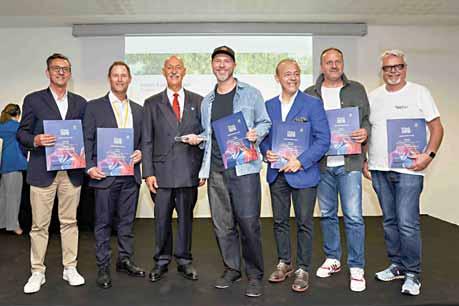
Above
CEMATEX President Ernesto Maurer with winners of the 2023 Research & Innovation Award — Kumar Jois, accepting the award on behalf of first runner up Eva Wingerath; winner Philipp Benjamin Weigel; second runner up Maryam Sodagar and advisor Professor Thomas Gries, ITA Institut für Textiltechnik der RWTH Aachen University
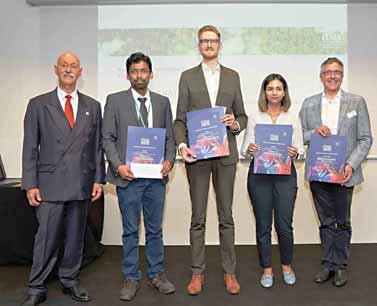
Above right (left to right): Celestino Panzeri, Limonta; Will Motchar, Navis TubeTex; Ernesto Maurer; Alberto Candiani, Candiani S.p.A.; Sergio Gori,
(ACIMIT). “It was a great success, judging from the quality of visitors in attendance, and many Italian exhibitors have secured contracts and sold their machines.”
Quality As Well As Quantity
Speaking of the quality and number of attendees, Pellegata’s observa-
tion was confirmed by most of the exhibitors at the show.
“We had good traffic at our booth in Barcelona, but visitors seemed like more tire kickers and fewer decision makers,” said Roland Zimmer, vice president, North American Sales, Zimmer Austria Inc., Spartanburg, S.C. “But here in Milan, our booth has
Machinery Exports: Near- & Reshoring Effect?
Several machinery associations held press conferences during ITMA and shared data on machinery exports by country. The Association of Italian Textile Machinery Manufacturers (ACIMIT) noted that the United States was the fourth ranked destination for Italian textile machinery exports in 2022. The total value of the exports represented an increase of 31 percent over the previous year. ACIMIT President Alessandro Zucchi said it was too early to know if this is because of near- and reshoring efforts, but perhaps reshoring is a factor in the year-on-year increase.
The German textile machinery association, the VDMA Textile Machinery,

also reported an increase in German textile machinery exports to the United States, moving to 266 million euros in 2022 from 231 million euros in 2021. The United States was the fifth largest market for German machinery exports.
Amazingly, the United States is the number one market for textile machinery exports from Spain. The Spanish Textile Machinery Manufacturers Association (amec amtex) reported a total value of exports to the United States in 2022 of $23 million.
As ACIMIT’s Zucchi noted, perhaps these figures are a result of near- and reshoring efforts in the Americas, but only time will tell.
Textile World JULY/AUGUST2023 11
left (left to right):
FK Group; Vincenzo Di Ascenzio, Denim Moda S.r.l.; and Stefano Tessarolo, Jeanologia.
been very busy the first few days and we have seen lots of decision makers.”
“We have had an amazing turnout,” said Rolf Erik Schoeler, global head of sales and marketing for Switzerland-based Benninger Group. “We compared the number of visitors to our booth with Barcelona and they are 30 percent higher. People also seem optimistic despite the increase in power costs. Optimism is definitely there, and we have honestly been overwhelmed.”
“I have been attending ITMA

trade shows since 1991,” said Rick Stanford, vice president, Global Business Development, Textile, St. Louisbased Baldwin Technology Co. Inc. “This ITMA has been crazy busy and blows all the others away. The first two days, our booth was so busy the only way to fit more people in was if they stood on each other’s heads. It was impossible to fit any more people in the booth!”
“We are pleased to share that ITMA 2023 was an excellent event for Dornier,” reported Oliver Meier,
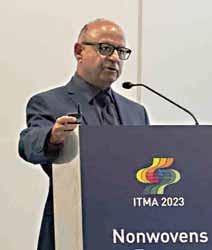
executive vice president, American Dornier Machinery Corp., Charlotte, N.C. “The introduction of the A2 airjet weaving machine at the show sparked interesting conversations, new ideas and initiatives that will have a positive impact on Dornier’s future business developments.”
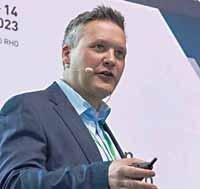
Brandon Reese, marketing, Measured Solutions, Greenville, S.C., said he noticed strong attendance from U.S. visitors. “The Textechno booth was much more active in Milan than four years ago in Barcelona,” Reese said. “Visitors were interested in the topic of recycling and testing the fiber strength and length of recycled fibers. We also met with a number of customers who were talking about plantbased fibers.”
Awards
ITMA 2023 again conferred its Sustainable Innovation Award and 2023 Research & Innovation Award to finalists who were selected by a panel of industry experts assembled by show organizers. Finalists for the ITMA Sustainable Innovation Award were Italy-based Candiani S.p.A. nominated by FKgroup for its Candiani Custom microfactory project; Denim Moda S.r.l. nominated by Jeanologia for its Denim Moda Urban Factory; and Italy-based Limonta nominated by Navis TubeTex for the Bio-FREED dyeing system. Candiani was named the winner, which marked the second recognition for the company after also taking the top honor in 2019.
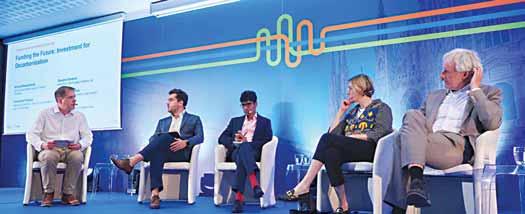
“Winning this award represents true recognition of the importance of research and development, as well as the investments and efforts required to make a positive change through better processes and products,” said company President Alberto Candiani. “Candiani won the award in 2019, and this additional recognition has become a sign of consistency towards our commitment to continuous, tangible improvements.”
“CEMATEX launched the ITMA Sustainable Innovation Award in 2015 to encourage and recognize
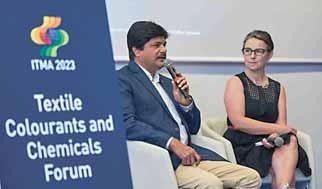
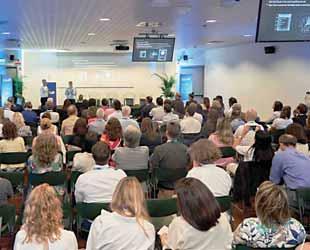
12 JULY/AUGUST 2023 TextileWorld.com
Clockwise from top: Visitors had the chance to participate in several collocated conferences and events including partner event Planet Textiles, organized by the Sustainable Apparel Coalition; the ITMAInnovator Xchange show floor education; partner event ZDHC Impact Day 2023 organized by the ZDHC Foundation; the ITMANonwovens Forum; and the ITMATextile Colourants and Chemicals Forum.
the collaborative efforts of our exhibitors and their customers for the industry excellence category,”
CEMATEX President Maurer noted. “Today, we are pleased to see another outstanding collaboration, and I would like to congratulate both Candiani and FKgroup for their innovative partnership. As the textile and fashion industry trends toward sustainability and circularity, we hope the Award will inspire more innovative efforts that result in business success, as well as benefit both planet and people.”
The Research & Innovation Excellence Award was implemented “to encourage academic institutions to embark on research work that contributes to the future of the textile industry. Philipp Benjamin Weigel was named the winner for his Master’s thesis “Numerical Simulation of the Structural and Pull-out Behaviour of Parametrically Generated Profiled Carbon Polymer Yarns.” He was nominated by the Germany-based TU Dresden, Institute of Textile Machinery and HighPerformance Material Technology.
Eva Wingerath was named first runner up for her thesis titled “Life Cycle Assessment and Evaluation of Composite Pressure Vessel End-OfLife Recycling.” Maryam Sodagar was the second runner up for her thesis “Banana Fibre as a Sustainable and Renewable Resource for Reinforcement of Polylactic Acid.” Both students were nominated by the Germany-based ITA Institut für Textiltechnik of RWTH Aachen University.
ITMAconnect
The event’s new digital listing of textile and garment technology manufacturers, ITMAconnect, was launched to complement ITMA. Available to ITMA participants prior to the show, the platform now is available to those who were unable to attend the event in person. People interested in accessing the platform to source and network with the international companies who took part in
ITMA 2027 Location, ITMA Asia + CITME Changes Announced
During a press conference on the first day of the show, it was announced that Hanover, Germany, has been selected as the host city for ITMA 2027. It is the first time since 2007 that the show will be held in Germany and 36 years since the event was last held in Hanover. The event will take place at the Hannover Exhibition Center September 16-22, 2027. “The Milan exhibition has set the benchmark for ITMA 2027 in Hanover,” said Dr. Janpeter Horn, chairman of Germanybased VDMA Textile Machinery. “We are eager and confident to continue ITMA’s success story 36 years after it has been hosted there.”
The owners of ITMA Asia + CITME — CEMATEX and its Chinese partners China Textile Machinery Association (CTMA) and the Sub-Council of Textile Industry, CCPIT (CCPIT-Tex) — also announced a new 2025 edition of the event to be held in Singapore. This is a change for the show, which has been held every two years in Shanghai since 2008.
Organized by ITMA Services and co-organized by Beijing Textile Machinery International Exhibition Co., ITMA Asia + CITME 2025 will take place October 28-31, 2025, at the Singapore Expo.

“We have successfully held seven editions of ITMA ASIA + CITME in Shanghai,” said Ernesto Maurer, CEMATEX president. “As part of our strategy to support the aspirations of local
the Milan exhibition may register at itma.com/dashboard/visitor/login.
Optimism For The Future?
Some U.S. textile manufacturers had reported a downturn in business conditions in the first half of 2023 and general rumblings appeared to lean negative about the overall future outlook for the U.S. industry. Let’s hope the positive energy and momentum from ITMA, along with the news that machinery exports to the United States increased in 2022 (see sidebar),
manufacturers in South Asia, South East and the Middle East to modernize their operations, we are augmenting the series with a second location in Asia to better reach out to the textile hubs in these regions.”
“Asia is the world’s biggest textile manufacturer and exporter,” said Gu Ping, CTMA president. “We are delighted to extend our cooperation with CEMATEX to bring ITMA ASIA and CITME to other parts of Asia to support our members’ marketing efforts.”
“Singapore is an attractive MICE destination and well connected to the growing textile hubs in South Asia and Southeast Asia, as well as the Middle East,” added Charles Beauduin, chairman, ITMA Services. “Its extensive airlinks and visa-friendly policies make it an accessible destination for these visitors. The exhibition also requires robust infrastructural and technical facilities to support live machinery demonstrations, which Singapore’s exhibition venue can provide.”
The next edition of ITMA Asia + CITME takes place in Shanghai November 19-23, 2023. So far, more than 1,400 exhibitors have committed to participate in the show, which was rescheduled from 2022 because of the COVID-19 pandemic. Moving forward, the show will continue to be held in Shanghai on a biennial schedule with the next combined edition to take place October 14-18, 2024.
point to a better second half of 2023 for the U.S. textile industry.
For a quick look on just some of the interesting technologies seen at the 2023 edition of ITMA, see “ITMA 2023 Edition —Just
A Few Of The
“Cool” Things On Display” in this issue of Textile World TW will begin its traditional sector-by-sector technical coverage of ITMA innovations in its September/October 2023 issue. Also look for an Executive Forum style feature with exhibitor impressions in a future issue of TW TW
Textile World JULY/AUGUST2023 13
ITMA2023 Edition —Just A Few Of The “Cool” Things On Display
Technology highlights from the industry’s largest textile machinery show mostly focused on sustainability.
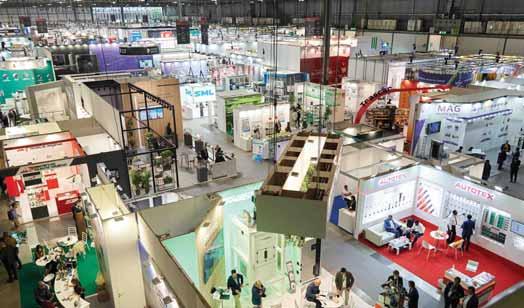
 By Rachael S. Davis, Executive Editor
By Rachael S. Davis, Executive Editor
For those not familiar with the ITMA tradeshow, it’s hard to accurately convey the sheer magnitude of the event from the expansive exhibit halls filled with technology loaded lavish booths to the huge volume of visitors wandering the halls. In 2023, ITMA —a quadrennial textile trade show owned by the European Committee of Textile Machinery Manufacturers (CEMATEX) and organized by Brussels-based ITMA Services — occupied 200,000 gross square meters of exhibition space with 1,709 exhibitors from 47 countries taking up 118,300 net square meters of exhibit space at the Fiera Milano Rho in Milan, Italy, to showcase their innovations. The overall theme for ITMA 2023 was “Transforming the World of Textiles.” Under that banner idea, several key ideas critical to defining and ultimately transforming the industry were highlighted including Sustainability and Circularity, Innovative Technologies, Automation and Digital Future, and Advanced Materials. It was clear observing the show floor that many exhibitors embraced the sustainability pillar full on. Many of the technologies focused on sustainable manufacturing
and recycling processes. Interestingly, the industry is moving on from Industry 4.0 and is already embracing the idea of Industry 5.0 —adding human, environmental and social aspects back
Zimmer Austria: Rotascreen Duplex Printer & STR System WENK
into the Industry 4.0 ideas focused on robots and smart machines. This acceptance of robots and smart machines working alongside people in a sustainable and harmonious way certainly does paint a picture of a transformed textile industry.
Approximately 111,000 visitors from all over the globe attended the event over seven days.
No matter how long a visitor spent exploring the show floor — be it one day or all seven days — it would be impossible to visit every booth to view all of the technologies and developments. Similarly, it is impossible for TW editors to identify and select all the unique, eye catching and “cool” things on display at the show. But what follows is a slice of some of the interesting technologies displayed during ITMA 2023 from across the exhibit sectors and presented in no particular order.
There is much, much more to share from ITMA 2023, and in-depth, sector-specific coverage will be presented in future issues of T W beginning in the September/ October 2023 issue. TW
While digital printing continues its evolution and ascent in the textile printing world, by far the majority of textiles continue to be printed using screen printing technologies. Austria-based J. Zimmer Maschinenbau GmbH introduced a modified version of its Rotascreen technology at ITMA that allows duplex printing so a fabric may be printed on the front and the back at the same time. The Rotascreen line now also can be supplied in an open or closed bearing option depending on the manufacturer’s needs.
Zimmer also launched the STR System WENK, a rotary screen stripping and ironing machine also known as the “Green Machine.” The machine uses only water and high-pressure jets to clean photo emulsion from rotary screens so they can be reused up to 20 times. No chemicals or acids are required —just standard fresh water. Stripping time will depend on the emulsion used. The high-pressure jets also remove any creases to effectively “iron” the screens. After treatment, the cleaned screens emerge in a near to new condition. Developed in conjunction with Italy-based partner WENK S.r.l., the Green Machine may be fitted with an optional water recycling system to recapture and reuse the water in an economic and sustainable process.
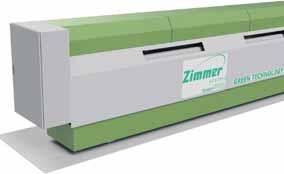
14 JULY/AUGUST 2023 TextileWorld.com ITMA2023
F
ITMA2023
Zimmer’s STR System WENK
Benninger: SingeRay
Switzerland-based Benninger AG reports its new SingeRay singeing machine has exceeded all expectations selling more units already this year than ever anticipated. The machine was designed with energy savings, natural gas in particular, in mind. Made in Germany, the SingeRay features four singeing positions as well as two special aluminum burners with ceramic flame guiding bricks, which offer higher production speed and higher heat intensity. Its silicium carbide burning chambers with four cooling channels ensure complete combustion and a constant burner temperature, which also helps to keep the nozzle strip straight. The machine can be adapted to accommodate different widths of fabric and rather than just shutting down sections of the flame bar, the actual chamber width can be modified to close the gap on each side thus aiding heat conservation and saving energy.
Stratasys: 3DFashion™
Direct-To-Textile 3D Printing Technology


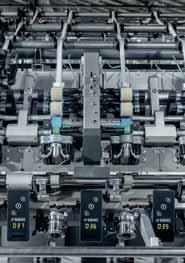

In terms of being “different” and eye-catching, Israel-based Stratasys Ltd.’s 3DFashion ™ direct-to-textile 3D printing technology was a stand-out. The 3D printing technology is some 30 years old, but the company said inquiries from customers drove it to develop the idea of 3D printing onto textile substrates. Stratasys offers advanced materials —fullcolor, translucent, rigid or flexible —that can be adhered to textiles and garments using the J850 TechStyle™ 3D printer. The company was at ITMA to introduce the concept and gauge interest in the technology.
The colors and geometries are basically unlimited and hindered only by the creativity of the designer, although for garment applications, the weight of the 3D printed material has to be taken into account. Initial tests show the resins can last about 20 washes currently, but the company is continuing its research and development for textile applications. Stratasys also is developing a 2D to 3D software tool to help J850 TechStyle printer users to adjust the height, color and texture of 2D images to transform them into 3D printed elements.
Examples of the technology on display at the booth included colorful wall art, embellished denim and bags, as well as technical textiles for automotive applications.
“ … Stratasys is ushering in a new era of textile printing that puts 3D printing technology directly in the hands of this community, opening up unlimited possibilities for them to introduce entirely new attention-grabbing added-value applications within their offering and drive new revenue streams,” said Enrico Toson, Stratasys’ marketing manager.
Savio: Lybra Smartspinner® Air-Jet Spinning Machine
Italy-based Savio Macchine Tessili S.p.A., long a specialist in yarn winding technologies, introduced its Lybra Smartspinner® air-jet spinning machine at ITMA 2023. Marketing and communication manager Eva Babbo acknowledged that other companies already do air-jet spinning technology very well and with the existing level of competition, Savio was determined to get it right and has been working to perfect its offering since 2016. In order to bring something to the space, Savio focused on the concept “We spin different.” The Lybra machine takes advantage of the Coandå effect, which is the tendency of a fluid jet to stay attached to a convex surface. As fibers enter the spinning nozzle, high-speed air jets create a helical flow that twists the fibers into a yarn.
One unique feature on the machine is the Multi Blend unit, which allows manufacturers to create mélange yarns as well as blended colors or blended fiber yarns. The flexible unit combines two slivers directly at the spinning unit, so instead of needing to preblend a sliver before spinning, a yarn manufacturer can blend and mix fibers as they are fed into the machine. The system can be adjusted to change the blend — from say a 50 percent white/50 percent blue sliver to a 30 percent white/70 percent blue combination — using the machine’s controls in a practically instantaneous manner. The machine is designed for high production rates, but with versatility and cost savings in mind.
Textile World JULY/AUGUST 2023 15
Savio’s Lybra Smartspinner®
Benninger’s SingeRay singing technology
A fabric created using Stratasys’ 3DFashion™ 3D printing technology.
DiloGroup: MicroPunch
Ever the innovator, DiloGroup did not disappoint with the introduction of its MicroPunch at ITMA 2023. The machine took approximately 20 years of study and research to come to fruition and the demonstration unit was ready just in time for the big reveal at the show. Needlepunching technologies have traditionally been better suited for medium to high fabric weight ranges in part because the needles leave a mark in the resulting nonwoven structure, which is more apparent at lower weight ranges. Hydroentanglement is most suited to weight ranges less than 100 grams per square meter — resulting in fewer applications for these types of fabrics, although they have a stronghold in wipes making up approximately 85 percent of the market. However, the water and energy requirements for hydroentangling are great. Enter DiloGroup’s MicroPunch,a new option for lightweight needlepunched nonwovens ranging from 30 to 100 grams per square meter. The machine features an insane 45,000 needles per meter per board made possible with an innovative needle and needle board design developed in conjunction with Groz-Beckert.The needles move in and out of the fiber web in a manner that minimizes as much as possible any needle marks in the finished nonwoven. The machine runs at 160 to 170 meters per minute and the company reports up to 50 percent savings in energy per kilogram of fabric depending on the product. Fabrics made using the MicroPunch are strong and have more volume than a lightweight hydroentangled fabric.
DiloGroup CEO Johann Philipp Dilo said interest in the machine was overwhelming during ITMA.
Stoll by Karl Mayer: ADF Concept Machine
Germany-based Stoll, a member of the Karl Mayer Group, introduced a prototype concept machine at ITMA 2023 —the ADF 530-16/4 ki WWK E7.2. The technology fuses flat knitting, warp knitting and weaving into one machine. The innovative yarn guides capable of 3D movement along with corresponding yarn feeding modules on this ADF model enable structures with sectoral polydirectional reinforcements and zones, which in conjunction with special and standard yarns can produce unique designs and functional structures with decorative seam effects. In particular, the machine offers interesting possibilities for medical structures, according to Matt Llewellyn, director of sales and marketing. Stoll also introduced the ADF 530-32 ki BcW E20 ultrafine gauge machine.

In addition, Stoll reports all its machines are 12percent more efficient than previous models thanks to new needles and optimized cams, and feature a new oiling system that is easier to clean and allows the oil to be filtered and reused.
Erca Textile Chemistry Solutions: REVECOL® Textile Auxiliaries
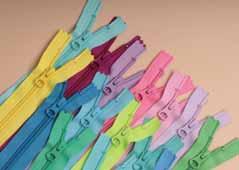

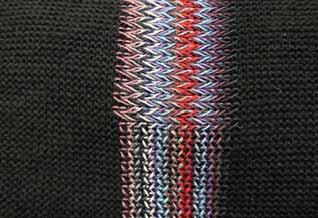
Italy-based ERCA Textile Chemistry Solutions introduced a new generation of auxiliary chemicals made from used vegetable oil. The REVECOL® (Recycle Vegetable Cooking Oil) by ERCA product line features a complete range of chemical auxiliaries — such as dyeing pretreatments, leveling agents, softeners, and emulsifiers/detergents among other products —that may be used on all fiber types including virgin and recycled fibers. ERCA’s safe and environmentally friendly manufacturing process takes the waste oil and transforms it into high-performing auxiliaries with circular DNA. All products are certified by Global Recycled Standard, Recycled Claim Standard, bluesign®, Global Organic Textile Standard and listed in the ZDHC Chemical Gateway. Additionally, a bluesign Product Carbon Report revealed that REVECOL LV-TS has a 72-percent lower carbon footprint than the conventional chemical auxiliaries ERCA manufactures. ERCA recently collaborated with Patagonia® and YKK Corp. to successfully implement the use of REVECOL in YKK’s dyeing processes at Vietnam-based production sites.
“We at ERCA are always looking for innovative solutions through the development of products that are increasingly high performing, competitive and sustainable at the same time,” said Fabio Locatelli, head of ERCA’s textile business unit.
“REVECOL is the perfect example of this and it represents the ‘so far missing piece’ for the production of textile materials that enable the approach to an increasingly responsible and certified supply chain without any compromise in performance.”
16 JULY/AUGUST 2023 TextileWorld.com
A sample produced on Stoll’s new ADF 530-16/4 ki WWK E7.2 concept machine.
DiloGroup’s MicroPunch needlepunching technology
YKKis using REVECOL® auxiliaries
Pailung: AlterKnit/Vanguard Pailung: High-Speed Production Machine
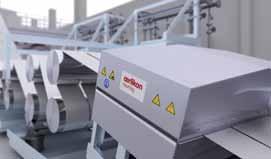
Taiwan-based Pailung Machinery Mill Co. Ltd. launched the AlterKnit™ circular knitting technology at ITMA. This upgraded version of inverse plating knits alternate yarns into the fabric’s structure allowing yarns of different colors or composition to be knit together within the same row. Intricate patterns with sharp borders are possible and the fabric is reversible. The finished fabric may be highly patterned and does not need to be dyed or printed for colorful effects, which saves energy and resources. Both a single-knit and double-knit machine are available. The process also does not result in yarn floats that may make a fabric uncomfortable to wear and reduces yarn waste.
Monroe, N.C.-based Vanguard Pailung also introduced a newly designed circular knitting machine for high-speed production. The machine is now driven from the bottom to reduce torque and stress on the knitting elements; and the knitting elements are elevated further from the ground to accommodate fabric rolls up to 500 pounds for customers that dye fabric in large batches. The machine housing also was redesigned in a square format, which is cheaper to build for a more economical machine. In addition, the square design saves floor space. Vanguard reports four of the new machines can fit in the footprint that previously held only three machines.
Officina39: Recycrom™
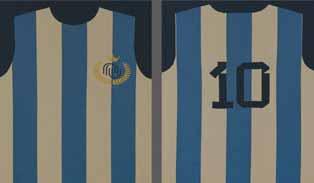
Dyestuffs & Ecobinder R

Italy-based Officina39 operates under the tag line “Chemistry Plus Creativity,” and the company has certainly found some creative resources to use as starting materials for its Ecobinder R Series and Recycrom ™ dyestuff products. The Ecobinder R Series is a binder suitable for printing, spray, coating and dyeing applications that is made using 100-percent postconsumer recycled polymer obtained from recycled windshields and other types of laminated and safety glass.
In 2018, the company introduced its Recycrom pigment powders — derived from 100-percent recycled used clothing, fibrous material and textile scraps. The waste textiles are processed using an upcycling process developed by Officina39 to create the pigment dyes. The company has continued to develop and refine this process and at ITMA 2023, launched the Recycrom Ready to Dye Dark and Bright line. The line offers 15 standard, in stock colors made using a minimum of 65 percent recycled textile pre- and postconsumer materials. The Ready to Dye pigments are suitable for use on cotton, wool or nylon as well as any cellulosic and natural fiber or blends. According to the company, 100 kilograms of textile waste can produce enough Recycrom Ready to Dye pigment to dye 20,000 T-shirts. Recycrom Pure allows manufacturers to partner with Officina39 to create custom dyes using their own scraps and textile waste.
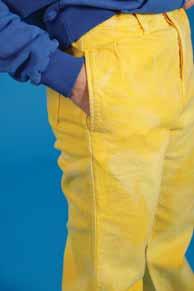
According to Officina39, Ecobinder R can be combined with Recycrom pigments for a circular solution.
Oerlikon Neumag: EvoSteam
While the demand for recycled yarns continues to grow, so does global demand for polyester staple fiber. The EvoSteam process introduced at ITMA by Germany-based Oerlikon Neumag is aiming to revolutionize the polyester staple fiber production process and make it economical, resource- and environment-friendly. According to the company, the EvoSteam process offers a 12-percent increase in efficiency, a reduction in production waste of up to 50 percent, energy savings of up to 8 percent, and a reduction in carbon footprint by up to 20 percent, compared to conventional staple fiber systems. Instead of using a liquid immersion bath, a coordinated setup of godets and pulsed spray nozzles adds only the precise amount of moisture needed to the process, which results in water savings of up to 10 million liters a year. The process also reduces the amount of spin finish needed, and energy required to produce the fiber is reduced since the fiber requires less drying at the end of the process.
Textile World JULY/AUGUST 2023 17
EvoSteam features an innovative draw point release using a vapor curtain for improved quality.
Pailung’s AlterKnit offers unlimited design possibilities including typography and logos.
Officina39’s Recycrom pigments are made from recycled textiles.
Navis Tubetex: Gaston Systems Chemical Foam Solutions (CFS®)

The President and CEO of Lexington, N.C.-based Navis Tubetex, Will Motchar, noted there was a lot of interest at ITMA in the company’s Gaston Systems’ foam technology for applying a low water foamed chemistry onto or into a substrate. The technology was originally used for chemical finishing where the precision applicators allow one chemical to be applied to the front of a fabric while a different chemical is applied on the back. But further applications for this proprietary technology are developing because of the ability to reduce chemical waste, as well as water and energy consumption.
The company recently collaborated with biofabrication company Modern Meadow who was searching for a partner that offered an application technology suitable for its Bio-FREED ™ powered by Bio-Alloy™ plant-based protein and biopolymer. When used as a dyeing pretreatment, the bio-based technology makes the fabric much more receptive to dyes. Research is continuing, but the process is interesting for its ability to reduce energy, water, and dyes and chemicals use during dyeing. When applied to a blended textile substrate using the Gaston Technologies foam equipment, Bio-FREED results in an estimated 95-percent reduction in water, 75percent reduction in energy, and an 80-percent reduction in the amount of dyes and chemicals needed. A partnership to develop the technology among Navis TubeTex, Modern Meadow Bio-FREED and Italy-based manufacturer Limonta was one of the three finalists for the 2023 ITMA Innovation Award. “We believe that sustainability should be at the forefront of every industry, including textile manufacturing,” Motchar said. “Teaming up with Modern Meadow allows us to offer our clients cuttingedge solutions that align with their sustainability goals. Together, we can drive meaningful change and shape the future of the textile industry.”
Thies: Signature Series Jet-Dyeing Machine
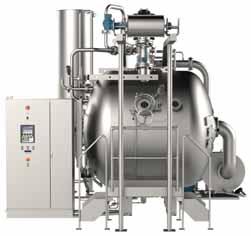
Karl Mayer: RSJFS 4/1 EL Warp Knitting Machine
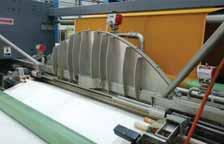
ITMA made it clear that the interest in natural fibers and especially recycled natural staple fibers is on the rise. In some instances however, these recycled and natural yarns can present problems in manufacturing. The latest Raschel crochet machine from Germany-based Karl Mayer —the RSJFS 4/1 EL, 130” E14 “CrochetKnit” model —features enhanced knitting parts as well as a synchronized suction and blowing system that helps manage excess lint so recycled yarns may be processed with ease. The machine can produce dense and complex patterns in crochet or knitted styles for handmade looks suitable for fashion applications. The machine features a fall plate as well as double switching technology in the jacquard bars to enable a wide range of floating designs and complex patterns. The Crochet-Knit machine will be available in early 2024.
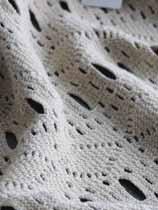
Germany-based Thies Textilmaschinen GmbH & Co. KG debuted the Signature Series machine, which was developed to dye cotton fabrics at the lowest possible liquor ratio using no salt. The jet-dyeing machine operates at an ultra-low liquor ratio as low as 1:2.3. For each batch, the liquor ratio is determined based on the fabric’s adsorption level plus a small quantity of water roughly equal to 0.6 liters per kilogram to ensure the pump used to circulate the dye liquor remains flooded. By removing water from the process, more of the dyestuff goes on to the fabric instead of hydrolyzing and ending up as a waste product. The machine delivers small amounts of highly concentrated dye throughout the dye cycle to ensure a level dyeing.
The machine can be used in three modes to dye using full salt, low salt or no salt. No salt dyeing reduces the effluent, which helps companies in countries with strict effluent policies; and both no and low salt processes save dyestuff and chemicals for both cost savings as well as environmental advantages.
The Signature Series prepares, dyes and rinses the fabric without the need for intermediate processes or machines. As a high-pressure vessel, the machine also can be used to dye polyester and is a great option for a company that handles a variety of fabric substrates. An adjustable, curved J-box also means the machine can handle light and heavy fabrics in full and reduced loads.
“Thies is opening a new chapter in fabric coloration,” said Verena Thies, managing shareholder, Thies. “Signature’s innovative ultra-low liquor ratio significantly enhances dye effectiveness, resulting in up to 20 percent decrease in dyestuff consumption. By combining Thies’ cutting-edge advancements, water usage is minimized by 25 percent.” These decreases are based on a comparison with Thies’ iMaster, the Signature’s predecessor.
18 JULY/AUGUST 2023 TextileWorld.com
Handmade natural fiber fabric made on Karl Mayer’s “Crochet-Knit” machine.
Gaston Systems’ foam technology
Thies Signature Series
Groz-Beckert: Needle “Innovation Through Cooperation”

Needles may seem like such a small part, but they are an extremely important component of any knitting or nonwoven machine. Germany-based Groz-Beckert is an experienced and accomplished producer of needles for various industries. At ITMA, the company unveiled several new needles and needle systems developed in conjunction with industry partners under the motto “Innovation Through Cooperation.”
As noted elsewhere in this piece, the right felting needle was instrumental in DiloGroup’s development of the MicroPunch needlepunching machine. The design embeds Groz-Beckert needles as a module in a plastic mold. A new intensive needling technology developed especially for light grammages results in felting needle modules with very high deformation resistance and offers new dimensions in needle density. The modules also were designed for easy and economical assembly and replacement.
In the knitting sector, Groz-Beckert also collaborated with Vanguard, Santoni and Mayer + Cie. on new products.

Germany-based Mayer + Cie’s Relanit 3.2 HS circular knitting machine features the new LCmax™ needles and SNK-SF sinkers. The modified wave shape shank geometry of the LCmax simplifies handling and reduces friction. The needle reduces energy costs up to 20 percent through minimal power consumption and reduced machine temperatures. The SNK-SF sinker was designed to be much more wear resistant and can reduce dirt deposits to extend machine cleaning intervals.
The Innotas system, comprising the SAN™ DUO needle and SNK DUO-OL sinker, was developed for Italy-based Santoni’s Innotas large diameter, single jersey machine. Both components feature a low shank — to minimize soiling when using abrasive yarns — and a predetermined breaking groove, which enables controlled needle breakage at the desired place in the event of wear. The system is self-cleaning and does not need to be overhauled and cleaned every eight weeks; and open cam parts allow fluff to be expelled, which reduces machine downtime.
Groz-Beckert also engineered a new compound needle for Monroe, N.C.-based Vanguard Pailung’s high-speed circular machines, which was designed for high productivity and high process reliability while reducing stress on the yarn. The needle, exclusive to Vanguard for now, can operate at a speed factor of 2200.
Jeanologia: Atmos & Air Fiber Washer
Spain-based Jeanologia S.L. was founded in 1994 with the mission of transforming the textile industry, and developing technologies and ecoefficient production models. At ITMA, the company launched a number of technologies in the “era of air” — so called as it aims to enter a new era of denim production with no water, no waste and zero discharge. The new Atmos atmospheric washing process pairs its G2 ozone technology with the new patented INDRA system to produce a stonewashed, authentic vintage look on denim without using water, chemicals or pumice stones. “Thanks to INDRA, we can achieve perfect control of the humidity and atmosphere temperature to achieve exceptional garment abrasion and discoloration,” said Carmen Silla, global brand & marketing director, Jeanologia. “We attain the same effects that were previously only possible with water, chemicals and pumice stones, while ensuring perfect reproducibility and enhanced productivity in a more efficient, sustainable and safe way.”
Jeanologia also collaborated with Spain-based apparel giant INDITEX to come up with a solution to reduce the release of microfibers from garments. Their development — the Air Fiber Washer —is based on testing that shows the majority of fiber fragments are released in the first three washes at home. To combat this, the Air Fiber Washer features a polyhedric drum and uses air flow to extract microfibers from the garments. According to Jeanologia, the Air Fiber Washer extracts up to 60 percent of microfibers during the process, which are captured using a microfiltration system and may be repurposed or recycled. Estimates indicate each Air Fiber Washer will collect up to 325 kilograms of microfibers per year. “Working with Inditex is a great experience and source of pride,” said Enrique Silla, Jeanologia president. “This initiative is just the first step in the mission we have set for ourselves to minimize the impact of microfiber shedding in textile manufacturing and in the product life cycle.”
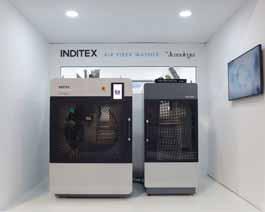
Textile World JULY/AUGUST 2023 19
Jeanologia’s Air Fiber Washer on display at ITMA
Groz-Beckert’s ITMA2023 booth had examples of all its latest innovative needle technologies.
Fiber World
Toray Grows Carbon Fiber Production
Toray Composite Materials America Inc.(Toray CMA),Tacoma, Wash.,is expanding its carbon fiber facility in Spartanburg,S.C.The planned 30,000-square-foot expansion will increase capacity at the plant by 3,000 metric tons by 2025. The investment will increase the supply of industrial strength carbon fiber for pressure vessel applications.
“The market for clean energy solutions is continuing to rapidly develop,”said Tim Kirk,Toray CMA’s vice president of marketing.“As released earlier this year under Toray’s Medium-Term Management Program,Project AP-G 2025,we are committed to accelerating technologies that will greatly reduce our environmental burden.This next
expansion enables us to keep-pace with the needs of our customers and maintain our leadership position.”
Indorama, Carbios Make Plans For PET Biorecycling Plant
Bangkok-based Indorama Ventures Public Co.Ltd.and Francebased Carbios have announced plans for a joint venture to build a PET biorecycling plant in France. Total capital investment is estimated around 230 million euros.Contract documentation should be finalized by the end of 2023,and both companies have acknowledged support for the project to move forward.
The memorandum of understanding signed between the two companies gives Carbios 13 hectares of land from an existing Indorama Ventures PET plant in Longlaville,France.
Nonwovens / Technical Textiles
Andritz Buys Dan-Web Machinery
Austria-based Andritz has signed an agreement to acquire Dan-Web Machinery A/S,a Denmark-based supplier of technologies for airlaid nonwovens used in baby diapers,feminine care,incontinence products and wipes applications,among other applications. The acquisition will strengthen Andritz’s nonwoven portfolio.
“I am delighted about joining forces with ANDRITZ,”said Kurt Soerensen,president of Dan-Web, “As part of the ANDRITZ GROUP, our product portfolio will be integrated into first-class process applications.Our common approach is to put a focus on further developing the range of environmentally friendly production technologies for the nonwovens industry.”
brrr° Completes $6.3 Million Capital Round
Atlanta-based brrr°,a developer of cooling yarns announced it has completed a $6.3 million round of Series B round of funding,which includes an investment from David Chu who has also joined the company’s board of directors. Chu plans to collaborate with brrr° to design fabrics and support sales through his own company DC Designs International.
“We are delighted to partner with David and bring his visionary expertise and global connections into the brrr°family,”said Founder Mary-Cathryn Kolb.“Together,brrr° and DC Designs International can accelerate each other’s growth with performance cooling fabrics that are both functional and beautiful.”
Permits are expected in Q3 2023 with construction to begin by the end of the year.The companies aim to commission the plant in 2025.
“Today’s announcement is a significant landmark in our partnership with Indorama Ventures and a major step forward in realizing our joint first-of-a-kind PET biorecycling plant,”said Emmanuel Ladent, CEO of Carbios.“The technical due diligence jointly undertaken with Indorama proves the robustness of Carbios’disruptive technology. At Carbios,we are committed to bringing plastic and textiles into the circular economy.Our first reference unit at Longlaville is a springboard for our industrial and commercial deployment worldwide in order to reach our leadership goals in advanced recycling of PET.” TW
Albany International To Acquire Heimbach
Albany International Corp., Rochester,N.Y.,has entered into a definitive agreement to acquire Germany-based Heimbach Group, a supplier of paper machine clothing.The all cash transaction is valued at approximately 153 million euros and includes the assumption of 21 million euros net debt. The deal is expected to close in the second half of 2023.
Heimbach’s machinery is used to make textile products for a variety of sectors as well as all grades of paper and cardboard. The company has approximately 1,200 employees in Europe and China,and its annual revenue in 2022 was approximately 161 million euros. TW
20 JULY/AUGUST 2023 TextileWorld.com
UNCOVER FRESH SOLUTIONS














Advanced Textiles Expo brings together over 4,000 decisions makers in the advanced textiles, specialty fabrics and shade and weather protection industries for three+ days of sourcing, education and networking events. Find solutions to all of your hard to solve problems at this exciting event!




300+ EXHIBITORS
ELITE SPEAKERS
EXCITING EVENTS
Walk our massive show floor and find the exhibitors who have what you are looking for.
300+ EXHIBITORS
Walk our massive show floor and find the exhibitors who have what you are looking for.


ELITE SPEAKERS
Ask questions, get advice and sharpen your mind with valuable education taught by industry experts.
Ask questions, get advice and sharpen your mind with valuable education taught by industry experts.
Make new and lasting connections while enjoying and participating in our networking events.
EXCITING EVENTS








Make new and lasting connections while enjoying and participating networking events.


PREDICTING THE FUTURE OF ADVANCED TEXTILES
Attend Emerging Technologies Conference *, formerly known as Advanced Textiles Conference. This event provides high-level advanced textiles education and networking. Discover the latest technologies, materials, and innovations in the textiles industry. Join us for an afternoon of tailored education taking place the day before the show floor opens, Oct. 31, 2023.
PREDICTING THE FUTURE OF ADVANCED TEXTILES

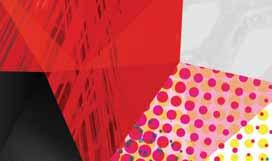
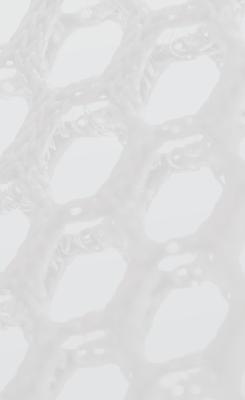
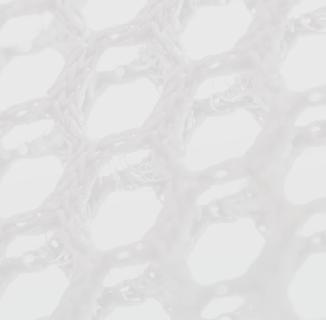







Attend Emerging Technologies Conference *, formerly known as Advanced Textiles Conference. This event provides high-level advanced textiles education and networking. Discover the latest technologies, materials, and innovations in the textiles industry. Join us for an afternoon of tailored education taking place the day before the show fl
* Emerging Technologies Conference requires an All Access Registration to attend. You do not have to be an ATA member to attend.






































Advanced Textiles Expo brings together over 4,000 decisions makers in the advanced textiles, specialty fabrics and shade and weather protection industries for three+ days of sourcing, education and networking events. Find solutions to all of your hard to solve problems at this exciting event! Education:

TODAY AdvancedTextilesExpo.com
Orange County Convention Center |
AdvancedTextilesExpo.com
Oct. 31–Nov. 3
Orlando, FL USA |
Name, Better Opportunities to Grow Your Business
New
REGISTER TODAY AdvancedTextilesExpo.com
* Emerging Technologies Conference requires an All Access Registration to attend. You do not have to be an ATA member to attend.
Nov. 1–3, 2023 | Education: Oct. 31–Nov. 3 Orange County Convention Center
Orlando,
AdvancedTextilesExpo.com CO-LOCATED WITH
|
FL USA |
New Name, Better Opportunities to Grow Your Business Formerly known as
UNCOVER FRESH SOLUTIONS
Cotton Incorporated Celebrates 50 Years Of The Iconic Seal Of Cotton
Today, the Seal of Cotton is embraced by more than 950 brands across nearly 70 countries, becoming a globally recognized symbol associated with fashion, durability, quality, and sustainability.
TW Special Report
CCary, N.C.-based Cotton Incorporated is commemorating the 50th anniversary of the Seal of Cotton trademark, an emblematic logo that revolutionized cotton from a basic agricultural commodity into a globally recognized symbol of natural comfort, trust and sustainability. This iconic seal serves as the distinguishing mark and common thread for cotton, becoming an emblem for all things #MadeInCotton.
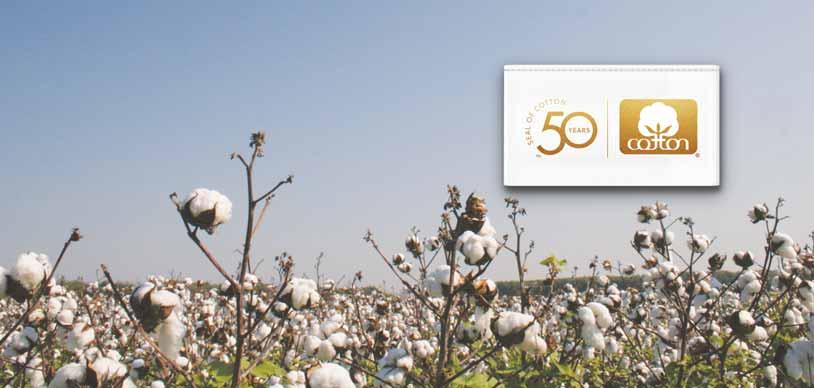
The Seal Of Cotton
Unveiled in 1973, the Seal of Cotton quickly gained recognition as a symbol of trust, quality, sustainability and dependability among consumers, retailers and textile brands. The brainchild of Susan Landor Keegin, daughter of branding pioneer Walter Landor, the design incorporated the natural elements of cotton. Inspired by the sight of cotton plants in the fields, with their rigid stems and soft bolls, Keegin envisioned the word “Cotton” growing from the roots. This vision-
ary concept gave birth to the Seal of Cotton, enabling easy identification of cotton fibers and differentiation from synthetic alternatives.
“The assignment was to find a way to stand up against synthetics,” recalled Keegin of Landor Associates. “I was going to see relatives who lived in the area and saw cotton growing in the fields with the bolls puffed up. Something about seeing it in person, the rigidity of the stem and the softness of the boll, I had never seen that.”
Today, the Seal of Cotton is embraced by more than 950 brands across nearly 70 countries, becoming a globally recognized symbol associated with fashion, durability, quality and sustainability. According to Cotton Incorporated’s 2023 Seal of Cotton Consumer Research, nearly eight out of 10 consumers — some 78 percent — are aware of the seal, empowering them to make informed purchasing decisions in favor of a natural, sustainable fiber that is known and trusted. Furthermore, more than
22 JULY/AUGUST 2023 TextileWorld.com
FIBER WORLD
Cotton’s emblematic Seal of Cotton trademark is 50 years old.
80 percent of consumers express confidence in a brand and its product when featuring the Seal of Cotton, while 90 percent appreciate cotton fabric for its comfort and versatility.
In the current retail landscape, 46 percent of U.S. consumers are willing to pay more for a brand they trust. The Seal of Cotton fulfills this need for trust among consumers, brands, and retailers alike. When the seal appears on a product, four out of five or 79 percent of consumers believe that the brand is more trustworthy, 80 percent say it’s more authentic, and 84 percent report the product is likely to be purchased. Over the past 50 years, this symbol has facilitated consumers’ journeys by signifying reliability, transparency and high quality.
Understanding Consumer Focus
“The 50th anniversary of the Seal of Cotton is a celebration of a highlyrecognizable icon that brings consumers a sense of emotional and physical comfort and familiarity,” said Kim Kitchings, senior vice president, consumer marketing for Cotton Incorporated. “Cotton has been woven throughout the eras of American culture and is part of monumental moments in each one of our lives. Fifty years of marketing and innovation has earned consumer affection, with over 90 percent stating that cotton is a preferred choice because of its comfort, softness, and versatility. We’re proud that the Seal of Cotton garners more than two times the awareness of other fiber logos and is a favored fabric.”
The focus on a long-term understanding of the consumer continues to be critical to Cotton’s focus.
“Brand recognition and relevancy is created by understanding the pulse of consumer’s needs,” Kitchings continued. “From the start, Cotton Incorporated invested in consumer research, listening to their voices, sharing it across the industry and weaving insights with quality fiber and products to transform a logo into an emblem of trust.”
And Cotton Incorporated also brings clarity to the entire cotton supply chain. “In a world that only seems to turn faster, the importance of accurate and timely information has become even more critical for addressing uncertainty,” noted Jon Devine, senior economist, Cotton Incorporated.“As a collaborator working with each stage of the supply chain, Cotton Incorporated strives to build on the integrity of analysis established over the decades with the objective of enhancing profitability for all participants.”
Manufacturers, Brands And Consumers
Throughout the years, the Seal of Cotton has made its mark and garnered preference among manufacturers, brands, and consumers. Its historical influence ranges from the “True Performance” advertising campaign of the 1980s, which showcased the symbol on countless retail garments, to the establishment of the Blue Jeans Go Green™ denim recycling program in 2006, aimed at repurposing denim and reducing textile waste in landfills.
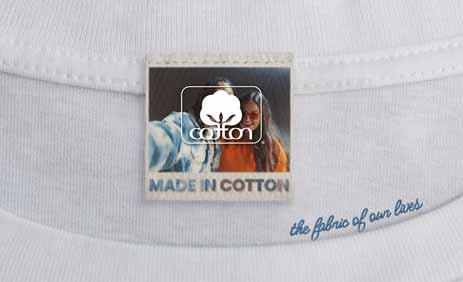
Cotton Incorporated celebrates the Seal of Cotton through the brand’s latest ad campaign focusing on the power of nostalgia, reminding consumers how powerful memories and
fashion styles over the decades have one common thread: cotton. The campaign runs on television, streaming services and through digital partners. Additionally, Cotton Incorporated developed an exclusive iteration of the Seal for the 50th anniversary and the celebration continues throughout the year with additional activities in the months to come.
Building On A Strong Foundation
Cotton Incorporated has achieved what almost every brand aspires to — a legacy and deeply ingrained feeling of trust and quality.
“The strength of a brand encompasses much more than the visual representation of an iconic logo,” said J. Berrye Worsham, Cotton Incorporated’s president and CEO. “It includes the collective spirit and unwavering dedication of the team behind it. Growers, spinners, brands, retailers and Cotton Incorporated’s team of researchers and marketers helped build the Seal of Cotton legacyand are the custodians of its values, and the driving force that propels it towards longevity. It is in their commitment to excellence, innovation, and adaptability that this brand finds the resilience to transcend eras and inspiration for the future.” TW
Textile World JULY/AUGUST 2023 23
The Seal of Cotton is is recognized by consumers and a survey showed a majority of consumers consider the brand to be trustworthy and authentic.
PFAS In The News
 By Rachael S.Davis, Executive Editor
By Rachael S.Davis, Executive Editor
PPer- and polyfluoroalkyl substances (PFAS), commonly referred to as forever chemicals, have been in the news for years, but the number of news stories seems to have picked up in 2023.
PFAS in textiles extend the lifetime of a product, and in some cases, impart properties currently impossible to offer with other products. But with data from the Centers for Disease Control and Prevention (CDC) showing that approximately 97 percent of Americans have detectable PFAS levels in their blood, and the
U.S. Environmental Protection Agency (EPA) noting that “current scientific research suggests that exposure to certain PFAS may lead to adverse health outcomes,” there is mounting pressure on legislators to regulate PFAS products, including their use in textile products.
Textiles Singled Out
Many industries utilize PFAS materials, and the textile industry consumes only a small fraction of the total PFAS products used. However, as noted by Hardy Sullivan in his

Glen Raven, producer of Sunbrella® brand performance fabrics, has announced plans to phase out the use of PFAS across its fabric portfolio.

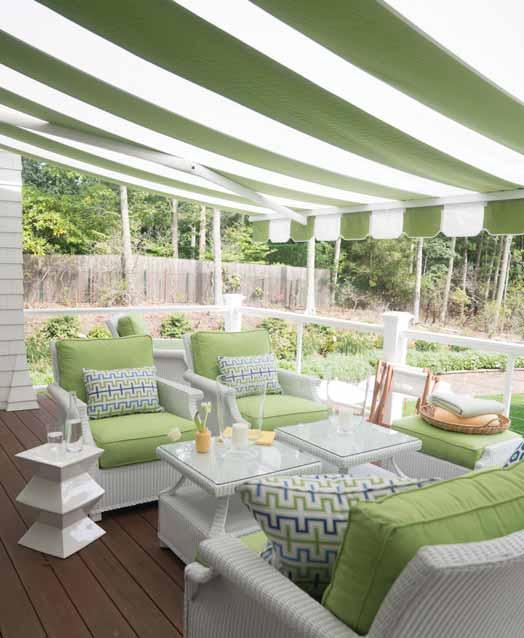
article “PFAS — A Textile Perspective,” published in the May/June 2021 issue of T extile World : “… stainresistant fabric gets top billing as a PFAS source in consumer-facing news articles,” and “Despite the textile industry’s role as a minor user of PFAS, negative press coverage has dented PFAS usage in textiles.”
Sullivan also noted: “Challenges include the media spotlight, environmental persistence, confusion about the chemistries, customer perception, shrinking market attractiveness for fluorotelomer producers, ongoing safety studies and regulators’ desire to target low-hanging fruit. The cards are stacked against performance textile producers and finishers.”
Legislation
There are no current federal bans on PFAS use in textiles, but a variety of state governments have passed legislation regulating PFAS in products including textiles.
California Governor Gavin Newsome passed bill AB 1817 late last year, which explicitly bans the use of PFAS in textile products including apparel, accessories and handbags starting in 2025. This ban represents the first U.S. ban on PFAS products used in textiles. One exception: Beginning in 2025, the state will require manufacturers to disclose the use of PFAS on outdoor apparel used for severe wet conditions, and the use of PFAS on such products must end by 2028. The new law also requires manufacturers to select the least toxic alternate to PFAS as they change their production processes.
Maine also passed legislation that adopts a phase-out plan. As of January 1, 2023, new carpets, rugs and fabric treatments containing PFAS may not be sold in the state, and the presence of PFAS chemicals in any product must be reported to the Maine Department of Environmental
24 JULY/AUGUST 2023 TextileWorld.com
As the per- and polyfluoroalkyl substances (PFAS) debate continues, textile companies are taking action and moving towards a future without PFAS.
DYEING, PRINTING & FINISHING
hdl fl
Quality (DEQ). By January 1, 2030, the law prohibits the sale of any products in the state that have intentionally added PFAS, except in the case of unavoidable use.
Other states have also restricted the use of PFAS on specific textiles such as apparel, carpet and upholstery, and more bans are likely in the coming years.
Of note, the federal government did phase out the use of long chain PFAS products such as perfluorooctanoic acid (PFOA) and perfluorooctane sulfonate (PFOS) and eventually banned the use of such compounds in food contact applications. The federal government may eventually pass laws that impact PFAS use in textiles.
Fight For A “Not One Size Fits All” Solution
While textiles have earned a bad rap when it comes to PFAS products, people in the textile and chemical industries are urging legislators to learn and fully understand the issues surrounding PFAS as they consider legislation.

Brian Rosenstein in his opinion piece, “PFAS Regulation Challenges,” published in the November/December 2022 issue of TW, suggested that it is important to determine essential versus non-essential end-uses for PFAS before implementing across-the-board bans. A lack of alcohol or oil protection on coveralls used by fuel handlers on aircraft carriers or reduced moisture protection for Kevlar ® body armor would put warfighters lives on the line. And unfortunately, the industry has yet to develop suitable non-PFAS chemistries to confer the needed protection in certain applications.
The American Chemistry Council (ACC) published a blog post recently entitled, “Overly Broad PFAS Restrictions Could Endanger Healthcare Quality and Cost.” The ACC mentions many medical products that are protected by PFAS products including textile-based personal protective equipment that acts as a barrier against infections and disease transmission in hospitals.

FLUOROTECHNOLOGY MAKES IMPORTANT PRODUCTS FOR VITAL INDUSTRIES POSSIBLE
FIRST RESPONDERS
OIL AND
Improves insulation, weather-ability, transparency and water-resistance. Provides smooth and smudge-resistant touch screens
AEROSPACE/
DEFENSE
Enables chemical-resistant tubes hoses and fluid seals; high and low temperature brake and hydraulic fluids used in aircraft control systems and brakes; and ultra-high frequency wire and cable insulation necessary for navigation, fly-by-wire control and aircraft communications. and surfaces.
Offers life-saving protection in safety gear and firefighting foams used to fight flammable liquid fires.
OUTDOOR APPAREL/ EQUIPMENT
Creates breathable membranes and long-lasting finishes that provide water repellency, oil repellency, stain resistance and soil release with abrasion-resistant finishes for apparel and equipment.
FluoroTechnology is the use of fluorine chemistry to create any fluorinated product. When fluorine and carbon atoms join together, they create a powerful chemical bond. The use and manipulation of this bond gives FluoroTechnology its distinct properties of strength, durability, heat-resistance and stability. These properties are critical to the reliable and safe function of myriad products that industry and consumer rely on every day.
“Accordingly, without an alternative that is both scientifically and economically feasible, overly broad restrictions on PFAS could have grave public health consequences for America,” reports the ACC. The organization urges federal and state policymakers to avoid heavy-handed measures and consider the lifesaving applications of PFAS. It suggests instead that legislators can ensure the “responsible production, use and management of this diverse family of chemistries can continue.”
Understanding The Full Impact Of The Issue
The issue is most certainly complex. There are thousands and thousands of different PFAS compounds. All are environmentally persistent, but the state of matter as well as the size of the polymeric or non-polymeric substances impacts the ability of the compound to enter the body.
And while the U.S. Environmental Protection Agency (EPA) has been studying the environmental and human health profiles of PFAS chemistries since 2000, there is still
much to be learned about the full human impact of PFAS.
It was announced earlier this year that Atlanta-based Emory University’s Rollins School of Public Health has partnered with the Chemical Insights Research Institute (CIRI) of UL Research Institutes, Chicago, to study human exposure to PFAS to understand how exposure occurs and its potential health consequences. Food products, water and air contaminated with PFAS chemicals pose a risk, but studies are limited on the exposure risk posed by everyday consumer and occupational products that contain PFAS. The research will focus on firefighter gear as well as consumer wearables.
“Research emphasis will include identification of specific PFAS chemicals in the materials, their levels, and how they can potentially enter the human body,” noted Dr. Dana Barr and Dr. Barry Ryan, professors in the Rollins School of Public Health and co-principal researchers. “To our knowledge, this study will be among the very first to focus on exposure to PFAS through contact with textiles.
Textile World JULY/AUGUST 2023 25 FLUORINECARBON BUILDING/ CONSTRUCTION Enhances durability UV resistance and anti-corrosive properties to lengthen the lifetime of infrastructure, facades ALTERNATIVE ENERGY Enables lithium batteries fuel cells and solar panels, which contribute to reduced emissions and energy costs. AUTOMOTIVE Provides every automotive system with durability, heat and chemical resistance and vapor barriers. Increases reliability of engine compartment wirings and gauges and improves auto safety by reducing engine compartment fires. Protects carpets and seats against stains, soil, oil and water. MILITARY Enables apparel and equipment to provide high-barrier skin protection in extreme environments and against chemical warfare agents. HEALTHCARE Serves as high dielectric insulators in medical equipment that relies on high frequency signals, like defibrillators pacemakers and CRT PET and MRI imaging devices. Used to treat medical garments drapes and divider curtains to protect against the transmission of diseases and infections. CHEMICAL/ PHARMACEUTICAL MANUFACTURING Provides sterile, corrosion-resistant coatings, linings and equipment ELECTRONICS
for plasma
etching
GAS Provides reliable equipment to help improve the safety and affordability of oil-field and pipeline operations. Improves the reliability and safety of fuel system seals and hoses O-rings and downhole and field equipment gaskets SEMICONDUCTORS Creates the ultra-pure manufacturing environments necessary for micro-electronics Used
machinery
materials, cleaning fluids and wetting surfactants for chemical etchants.
Descriptions of PFAS end-uses by industry according to the American Chemistry Council.
Knowledge of such exposures can lead to a better understanding of the role of such materials in aggregate exposure to these ubiquitous chemical compounds.”
Industry Action
Despite uncertainty and an unknown future, recent news confirms textile companies are looking at a future without PFAS.
Spartanburg, S.C.-based Milliken & Company had announced in early 2022 that it would eliminate PFAS from its textile finishes and fibers portfolio by the end of the year. In February, Milliken reported that it had achieved its goal, becoming the first U.S.-based multi-market textile manufacturerto eliminate the use of PFAS.
“This is a tremendous accomplishment and tribute to our team who worked around the clock to develop solutions that meet our customers’ performance requirements and reflect our purpose to positively impact the world for future generations,” said David Smith, executive vice president, Milliken & Company, and president, Milliken’s Textile Business.
In order to reach its aggressive goal, the company focus on three areas — durable water repellency (DWR), soil release and oil repel-

lency. With many PFAS-free DWRs in the marketplace, Milliken was able to easily assess and implement alternatives in its production processes. Milliken’s internal research team developed a new proprietary soil release technology that has been integrated into suitable textile applications, although it is not currently an alternative for every soil-repellent finish application.
Interestingly, Milliken — a company long associated with textile chemistry innovations —announced

that after searching for an alternative oil repellent finish, none was found, and the company decided to exit that line of business.
“Our work was intricate, and our team, including research and development, sourcing, compliance, sales, and many other functions, approached this initiative thoughtfully and with great care for our customers,” added Dr. Jeff Strahan, director of sustainability, compliance and research for the Textile Business. “We’re thrilled to be leading the industry in taking meaningful action that will have an immediate impact.”
Before Milliken’s announcement, Polartec® — a Milliken & Company brand based in Andover, Mass. — had also reported it had eliminated PFAS in its DWR treatments used to manufacture its performance fabrics including Hardface®, Power Shield®, Power Shield Pro, NeoShell ® and Windbloc ® . “Achieving non-PFAS treatments within our product line is an important milestone in our commitment to sustainably made performance fabrics,” noted Steve Layton, Polartec president. “It’s the latest step on our journey to an even more sustainable Polartec.”
Glen Raven Inc., Burlington, N.C., also recently announced it has begun to phase out the use of PFAS across its global fabric portfolio. The com-
26 JULY/AUGUST 2023 TextileWorld.com
PFAS compounds are used to produce a variety of tactical gear and other warfighter products where high-performance alternatives for oil repellency or other required protective properties currently do not exist.
Overly broad restrictions on PFAScompounds may have consequences in healthcare.
pany has already begun the transition with a goal of moving to nonPFAS production by the end of the year. The company also reports any new products developed for its Sunbrella ® brand will be specified as non-PFAS and will be manufactured using Glen Raven’s new non-PFAS solution.
“Since 2015, our global research and development team has been working with accredited research laboratories and universities to evaluate and develop the best alternatives to PFAS-based finishes,” said Dave Swers, president and COO of Glen Raven Custom Fabrics. “We have invested significantly in this work and the solutions we’re introducing will allow us to continue providing anyone who purchases our fabrics with the best-in-class performance they expect while minimizing our environmental impact as an organization. Our Sunbrella Contract fabrics have included non-PFAS solutions since 2019 and we look forward to implementing non-PFAS solutions across our portfolio.”
Brands Also Driving Change
Textile manufacturers are making changes and brands are too. Seattlebased outdoor retailer REI recently reported it will ban PFAS in all textile products and cookware from suppliers beginning in the fall of 2024. Apparel items include, but are not limited to, apparel, accessories, footwear, and packs and bags. Professional, expedition-level apparel was granted a twoyear extension to eliminate PFAS, to the fall of 2026. The company came under pressure from REI members who staged rallies and signed petitions urging REI to eliminate PFAS from the products it sells.
It was also reported in the news that Seattle-based Dick’s Sporting Goods quietly made a commitment ban PFAS in its own-brand textile products.
As of this spring, Patgonia reported some 66 percent of its materials made using water-repellent technologies are PFAS-free, and the
company has committed to converting all of its water-repellent finishes to non-fluorinated versions by 2024. Patagonia notes that: “With no set industry-wide goal to eliminate the use of these chemistries, we see this as an opportunity to inspire others. By working within a shared supply chain and encouraging other apparel brands to utilize the solutions we’ve vetted and adopted, we hope to enable large-scale changes and success in more PFC-free products throughout the industry.”
Issue Goes Much Further Than Textiles
Whether as a result of public noise and pressure, or scientifically backed sound decision-making, PFAS products will continue to be phased out. This broad issue, with implications that extend well beyond the textile arena, is not going away.

The North Carolina DEQ currently is developing standards for PFAS compounds in surface and groundwater in the state. “PFAS contamination is a state-wide issue, larger than one company or one compound,”
said DEQ Secretary Elizabeth S. Biser. “We are using every tool at our disposal to address these forever chemicals in a comprehensive way, reduce the amount of PFAS entering the environment and protect the health of North Carolinians.”
Seismic Shift
In the decades following the discovery of PFAS chemicals, manufacturers have relied on them for their ability to confer a variety of properties such as repellency, and chemical, temperature and fire resistance, among other properties. Fluoropolymers — just one type of PFAS out of the thousands that exist —are used in medical products and implantable devices and are considered to be safe.
With the knowledge that PFAS compounds persist in the environment, it is important to take action. But trying to fully understand the intricacies of the issue first is essential to legislation that makes sense.
As the issue is studied and more is learned, perhaps in some cases, the benefits will continue to outweigh the risks. TW
Textile World JULY/AUGUST 2023 27
Firefighter turnout gear may rely on PFAS compounds to achieve the high performance specification needed to protect firefighters in the line of duty.
Dyeing,Printing & Finishing
TSG Expands Into Chemical Compound Sales
TSG Finishing LLC,Hickory, N.C.,is expanding into chemical compounding sales allowing the company to share its expertise in chemicals and coatings with customers.Flame retardant,antimicrobial,durable water repellent, and liquid stiffeners and absorption solutions,among other solutions, can be tailored to customers’needs. Markets include residential and contract upholstery,construction materials,filtration,geotextiles,personal protective equipment and beyond.
“Our expansion into chemical compound sales underscores our commitment to fostering scientific rigor,innovation,and technical excellence within our clientele’s coating processes,”said CEO Brian Rosenstein.
Lenzing Launches Dyeing Method To Reduce Pollution
Austria-based Lenzing has introduced a new dyeing approach for its TENCEL™ lyocell fibers to address pollution caused by textile dyeing and finishing.Its method includes yarn pretreatment and a specific knitting technique that produces a wash-down aesthetic in ready-to-wear garment and knitwear.The company reports its one-step dyeing process can reduce water usage by up to 50 percent, energy by up to 40 percent and dyes and chemicals by up to 90 percent.
“By overcoming the limitations of traditional dyeing,our new approach is a resource-efficient alternative that helps translate into greater sustainability and more competitive operational costs for fabric mills,”said Rex Mok,vice
Knitting / Apparel
New Cutting Solutions From Lectra
France-based Lectra has launched a new generation of intelligent cutting equipment for low-ply fashion applications.The VectorFashion iX2 and VectorFashion Q2 are well-suited to quick transitions between smallvolume production and larger orders and can cut all types of materials.
“As economies of scale are increasingly difficult to achieve, fashion manufacturers need to gain flexibility while controlling the costs associated with the production of the orders they receive,”said Maximilien Abadie,chief product officer at Lectra.“With optimized running costs and enhanced performance,the new generation of VectorFashion iX2 and VectorFashion Q2 cutting solutions offers them a better return on
investment,and helps them increase their margins while also reducing their environmental footprint.”
Midland Apparel Acquires Southern Point
Midland Apparel LLC,Columbus, Ga.,reports it has acquired the Southern Point Co.brand from founder Brent Howell.The brand has become popular in the southeast and is known for its distinctive German Shorthair Pointer design and classic designs.“We are very excited about this acquisition,”said Scott Danford, president of Midland Apparel.
“We believe that Southern Point Co. is a very distinctive lifestyle brand and that we have a strategy that will enable us to further differentiate ourselves from the competition.
We have big plans for the brand.”
president of Fiber Technical Marketing and Development at Lenzing.
Pulcra Chemicals, Inditex Launch Sustineri Coloring
Germany-based Pulcra Chemicals has collaborated with Spain-based Inditex to develop Sustineri Coloring, a combined pretreatment and dyeing process for cotton and poly/cotton blends.Selected mills already are using the one-step process,which has shown to reduce processing time by up to 60 percent,water use by 80 percent and energy consumption by up to 60 percent.
“This partnership is a significant step toward realizing our ambition of bringing environmentally friendly solutions to the worldwide textile market,”said Ümit Yaldiz,CEO of Pulcra Chemicals Group. TW
Polartec Introduces Fresh Face
Polartec®,a Milliken & Company brand based in Spartanburg,S.C.,has launched a natural and renewable fabric odor reducer called Fresh Face. The product features botanical mint oil harvested and distilled in Oregon. Fresh Face makes its debut on Polartec Delta™ fabrics,which are designed to cool the wearer through wicking and moisture management technologies.
“Fresh Face represents a significant breakthrough in our quest for sustainable textile solutions,”said Karen Beattie,director of Product Management at Polartec.“It is a natural and renewable odor reducer that not only outperforms our existing technologies but also aligns with our commitment to environmental responsibility.” TW
28 JULY/AUGUST 2023 TextileWorld.com
Moss,

What’s Now And Next In Sustainable Textiles?
IIt’s no longer a secret that traditional manufacturing practices within the textile industry have had an adverse effect on the environment. Pollution, resource depletion, and waste generation are lingering concerns. Mass production and consumption have intensified these conditions. But there is hope for our industry. In recent years, there has been a notable shift towards sustainability, with several trends and innovations emerging to address the challenges faced. Now is the time for selective growth and new opportunities to reimagine the impact textiles have on the planet. This article explores now and next trends in sustainability that will shape the industry.
Now: Fiber Solutions
Synthetic fibers like polyester and nylon are the building blocks for a wide range of textile applications from technical to fashion. Utilizing recycled fibers like REPREVE®, SEAQUAL®, and ECONYL® diverts plastic waste from land and sea, addressing the global plastic pollution problem and reducing demand for fossil fuels from which polyester and nylon are derived. The manufacturing process of recycled fibers produces less greenhouse gas emissions when compared
The textile industry is experiencing a profound shift towards sustainability driven by demand and the urgent need to address environmental challenges.
By Elissa Decker
to the production of virgin fibers. Recycled fibers exhibit largely the same quality and performance characteristics as virgin fibers. By choosing products made from recycled polyester, manufacturers and end users give new life to materials that would otherwise end up as waste.
Synthetic fibers are composed of plastics that can remain in our environment indefinitely because they are not biodegradable. Polyesters featuring technologies such as CiCLO® have entered the market to address this challenge. By embedding multiple biodegradable points throughout the polymer chain, enhanced fibers in landfill conditions can attract microbes that break down the fibers within as little as several years. This development is progress.

Another trend is the increasing use of organic and rapidly renewable fibers. Manufacturers and end users

are turning to organic cotton, hemp and bamboo to reduce the ecological footprint of their products. Organic cotton is grown without the use of synthetic fertilizers or pesticides, minimizing soil and water contamination. Hemp and bamboo are fast-growing, low-impact crops that require fewer resources. These alternatives lessen the use of pesticides and energy during cultivation, making them more environmentally friendly than conventional natural fibers.
Now: Conservation
Textile manufacturing, which has traditionally required an excessive amount of resources, now has the critical advantage of new processes and technologies that make conservation possible. To address these concerns, textile manufacturers can now invest in energy-efficient machinery, utilize renewable energy sources, and optimize production processes to minimize waste and greenhousegas emissions. These improvements are not only good for the environment, but also often for the bottom line — so everyone can win.
Traditional textile manufacturing is water intensive. The World Bank estimates that almost 20 percent of global industrial water pollution comes from
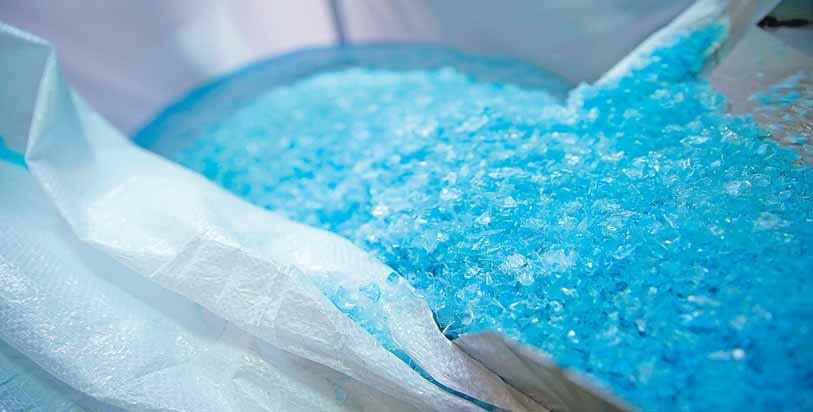
Textile World JULY/AUGUST 2023 29
SUSTAINABILITY
a provider of high-quality graphics and tension structures, joined the SEAQUAL INITIATIVE, a community that works with ocean clean-up programs worldwide to transform recovered marine litter into upcycled marine plastic.
the textile industry.Water is used in scouring, bleaching, mercerizing, sizing and desizing, and also as a solvent for dyes and chemicals. These processes generate wastewater, which requires cleaning. Textile manufacturers now can invest in equipment to reduce the generation of water consumption at its source. For example, waterless dyeing techniques are now possible through equipment like England-based Alchemie Technology’s Endeavor ™ waterless smart dyeing technology, which eliminates wastewater and generates as much as 85 percent in energy savings.
Surface design remains a compelling benefit of textile production. Conventional full coverage print methods create waste and can require high amounts of energy for operations. Digital printing is one print method that allows for the precise application of color resulting in smaller scale customization and the minimization of waste.
Now: Recycling
The circular economy concept has gained traction in the textile industry as it aims to minimize waste, extend the lifespan of textile products, and reverse overflowing landfills. Why can a fabric not be simply recycled like an aluminum can? The answer is both simple and complex. Ultimately, greater support is needed to create infrastructure for processing textile waste at local scale and limited
resources are available. However, there is hope. In the retail industry, brands are increasingly implementing take-back initiatives, allowing customers to return used garments to stores for recycling. By collecting and sorting discarded clothing, manufacturers are taking on the responsibility of keeping items from the landfill.
For textile manufacturing waste, higher quality recycling outcomes are possible through mechanical shredding and separation of uniform reclaimed fibers, enabling the creation of second-life textile products such as insulation, carpet padding or packaging. Despite challenges including sorting, transportation, minimum required quantities, and costs, demand for accessible textile recycling is increasing.
Next: Fiber Innovation And Biobased Materials
Fiber innovation and the development of biobased materials will continue to gain momentum. With a focus on reducing dependence on non-renewable resources, alternatives derived from a growing list of resources including agricultural waste, seaweed, and even bacteria are being explored.

The advancement of biotechnology and biomimicry is expected to drive further innovation in this area, leading to the creation of novel sustainable textiles. For example, spider silk proteins produced through
recombinant methods which exhibit exceptional strength or myceliumbased leather substitutes made from the root structure of mushrooms that look identical to natural hide leather. Innovation will also be focused on enhancing the properties of existing fibers. For instance, nanocoatings are being explored as a possible method to improve fabric durability and lifespan ultimately creating less waste.
Next: Digitalization And Smart Textiles
Digitalization is set to revolutionize the sustainable textile industry. The integration of technology and textiles will enable the development of smart textiles with enhanced functionalities, helping to drive innovation in other industries. From garments that monitor vital signs and activity levels to fabrics that change color or texture based on environmental conditions, these innovative textiles will offer new possibilities for sustainability and user experience.
Smart textiles are being designed to improve energy efficiency, comfort and safety. Imagine piezoelectric textiles that generate electrical energy through mechanical stress, potentially enabling the integration of selfpowering wearable devices and what that could mean.
Digital tools and platforms will also optimize supply chains, enabling traceability, transparency, and efficient resource management. Blockchain technology, for instance, provides a decentralized and immutable record of every stage in the supply chain, ensuring that sustainability standards are met and counterfeit products are eliminated. This level of transparency enables consumers to make informed choices and support brands that align with their values.
For textiles and beyond, digitalization drives sustainable manufacturing practices through real-time data monitoring and analytics. By collecting data on energy consumption, water usage, waste generation, and more companies are able to identify
30 JULY/AUGUST 2023 TextileWorld.com
Using recycled fibers like REPREVE®, SEAQUAL® and ECONYL® diverts plastic waste from land and sea, addressing the global plastic issue and reducing fossil fuel demand.
areas for improvement and implement resource-saving measures. In time these data can be leveraged through machine learning and artificial intelligence algorithms to optimize production processes, reducing material waste, and energy consumption. Increased advanced robotics and automation will transform companies by enhancing efficiency while minimizing errors and improving quality control.
Next: Circular Economy
The circular economy concept, where resources are kept in use for as long as possible, will continue to shape the textile industry. The adoption of closed-loop systems will become more prevalent, focusing on recycling, upcycling and reusing textiles. This trend supports the reduction of waste and also decreases reliance on virgin resources, contributing to a more sustainable and resource-efficient industry.
Chemical recycling, sometimes referred to as molecular recycling or depolymerization, is an emerging technology that offers great potential for sustainable textile production. Unlike mechanical recycling which involves shredding fibers, molecular recycling breaks down textile materials at the molecular level, allowing for the regeneration of virgin-quality fibers. This process has the potential to be of heightened significance for textiles with composite compositions that are challenging to mechanically separate. By reprocessing textiles to original quality fiber components, molecular recycling could effectively close the loop.
Several companies and research institutions are actively exploring molecular recycling technologies for textiles. These initiatives focus on developing efficient and scalable processes that can handle a wide variety of textile compositions. By investing
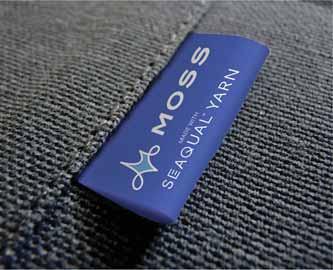
in research and development, the industry aims to improve the effectiveness and cost-efficiency of molecular recycling, ultimately enabling widespread adoption. Furthermore, if industries can align on using the same source materials, the overall global circular economy could be significantly simplified.
As molecular recycling technologies continue to advance, they have the potential to revolutionize the textile industry's approach to waste management and resource conservation. By converting used textiles into valuable raw materials, molecular recycling could be the answer to a sustainable textile ecosystem.
Next: Transparency And Ethical Practices
A big step forward is expected in transparency and ethical practices throughout all industries and supply chains. End users are increasingly
ing practices. The emphasis on worker welfare and social justice in all industries throughout the world will continue to grow.
Cause For Collaboration
Awareness for the impact of textiles on our oceans will grow. Wearing and washing of textiles leads to fiber friction, a source of microplastics. Microplastics are highly concerning because they are threatening aquatic life including plankton, which produce 70 to 80 percent of the oxygen on the planet. In many ways, what is “next” is urgently needed “now.”
Conclusion
expecting visibility into the origins of products, ensuring fair labor practices and sustainable sourcing. To meet this demand, companies will continue to invest in traceability systems like Global Recycle Standard, certifications like OEKO-TEX ® , carbon neutrality off-set partnerships like ClimatePartner, or sustainability ratings like EcoVadis that promote responsible and ethical manufactur-
The textile industry is experiencing a profound shift towards sustainability driven by demand and the urgent need to address environmental challenges. From adopting ecologically conscious fibers to implementing resource efficient equipment and promoting circularity to embracing transparency, as participants up and down the supply chain, it is collectively redefining the industry's practices. The industry holds the power to contribute to the positive transformation of the textile industry and pave the way for a more sustainable future by choosing sustainability and supporting manufacturers committed to eco-friendly practices. The ongoing efforts within the textile industry highlight the importance of collaboration, innovation, and conscious consumption in achieving a truly sustainable and responsible ecosystem. By leading the charge, it can help other industries make the transition as well. TW
Editor’s Note: Elissa Decker is director of Global Textile Development and Procurement at Franklin Park, Ill.-based Moss, a company specializing in tensioned fabric structures, custom fabrication solutions and large format printing, among other services.
Textile World JULY/AUGUST 2023 31
Moss’ SustainaTex Ocean is a fully sustainable fabric produced using upcycle marine plastic and recycled polyester.
Digital color management using a spectrophotometer such as Datacolor’s Spectro 1000 can provide an accurate and effective way to measure fluorescent colors.
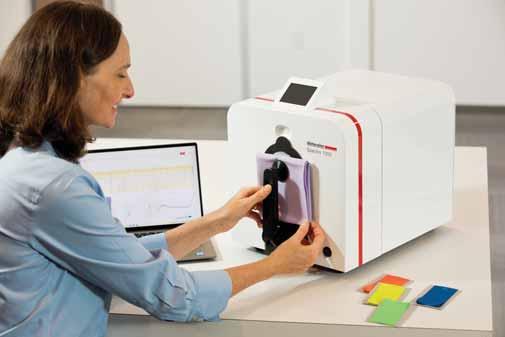
Matching florescent hues can be challenging, but digital strategies can help manage the process.
By Ken Butts
Bright Ideas For Fluorescent Color Matching
DDesigners and colorists know how difficult it can be to get fluorescent colors right. Yet it’s also undeniable that these colors have a very strong draw on consumers across multiple categories, including sportswear, swimwear, and more. So despite the difficulties they present, the payoff can be great.
But what makes fluorescent colors so hard to achieve?
Shedding Light On The Challenge
Most colors become darker as more dye or pigment is added to the fabric or other substrate. The results can be measured precisely using a spectrophotometer —a device that reports the amount of light reflected from the material across the visible spectrum. This measurement, known as a reflectance curve, effectively provides a “fingerprint” for the color and enables extremely predictable matching.
Fluorescents, conversely, work in the opposite way. As fluorescent dye is added, the fabric absorbs more ultraviolet (UV) light and reflects it as visible energy — making colors brighter and more intense.
Figure 1 shows the reflectance curves for several common fluorescent colors. All four numbers have values that exceed 100 percent. This means they’re reflecting more energy than was present in the visible portion of the light source when they were measured — which makes the samples look brighter than non-fluorescent colors.
“The hardest part about fluorescents is setting expectations with designers and merchandise partners in terms of what is feasible,” said Kristen Bell, manager of color development for Carhartt Inc. “Design loves them because of the lift they provide to the floor and they’re eye-catching for the consumer. But not all substrates can match to our standards.”
In simple terms, the math that underlies color science —and by extension, color matching software — cannot handle fluorescence. This makes computer recipe formulation impossible, and color approval more challenging — especially when colors need to match across two or more material types. In addition, computer monitors can’t accurately display or calibrate hyper-bright colors, further
complicating digital workflows.
John Newton, head of color technology for Coloro, a global color standards provider, also pays close attention to the challenges of color fastness when dealing with fluorescents. “The property of these dyes just means that they fade a lot more quickly than standard dyestuffs,” he explained. “The other thing is that people love these colors in swimwear. Then you’ve not only got sunshine, you’ve got chlorine and salt — all enemies of dyestuffs.”
Can Fluorescent Colors Be Measured?
The simple answer is yes. But there are several considerations to bear in mind.
For a spectrophotometer to produce accurate data when measuring these colors, it’s critical to certify the UV capabilities of the instruments used. This should be done once a year to ensure repeatability and reproducibility of measurements.
Second, and perhaps even more importantly, the reflectance of fluorescent samples is affected by the UV energy output of the lamp used by a
32 JULY/AUGUST 2023 TextileWorld.com
DYEING, PRINTING & FINISHING
spectrophotometer. For example, in instruments with a xenon flash lamp, the amount of UV energy produced by the flash will vary over time. The UV content must therefore be calibrated using special UV standards to ensure the sample is exposed to a consistent amount of UV energy.
Variances between instruments that can affect the overall energy output, such as the age of the lamp or the condition of the sphere, also can result in very different measurements. This can be especially challenging if a supply chain has a mix of old and new instruments. The best repeatability can be achieved if instruments and their flash lamps are of similar in age and condition.
Another challenge when evaluating fluorescent colors is that some have very specific acceptability standards. Samples of “blaze” or hunter orange, for example, must be measured in accordance with ANSI or ASTM requirements. Although this may not be possible with a sphere instrument, the relative color difference can be evaluated an acceptable standard has already been established. In this way, a pass/fail program that measures production samples against a standard before submitting them for certified testing can effectively be created.
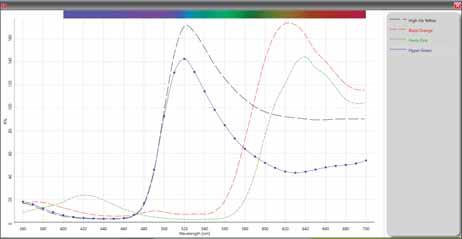
The Digital Advantage
Many textile companies are just beginning to realize that fluorescent samples can be measured in this way and are recognizing the potential benefits.
Without a digital process, a supplier who is up against a tight deadline may go ahead and send a large fabric order to the cutting stage without verifying the exact color match. By the time any issues are discovered, a manufacturer may face the difficult choice of sending a product that doesn’t meet expectations to retailers or disposing of it. Either option risks a potential loss of revenue.
By providing a more accurate and objective way to measure fluorescent colors, digital measurement enables
suppliers to evaluate their production against a digital standard. This saves time and costs by reducing the number of physical samples that need to be shipped back and forth — and makes it easier for customers to hold their suppliers accountable.
Dye houses also can leverage this technology to take a more proactive approach to educate their customers. Since design and product management teams have become accustomed to what color matching technology can do with non-fluorescent colors, they often don’t understand why a dyer can’t be expected to match any fluorescent color they choose.
A better approach is for dyers and color standards providers to educate their customers with a library of shades they know they can achieve —the more robust the better. Given a selection to choose from, designers and producers can have confidence from the start that their fluorescent selections are achievable, or what the limitations will be when multiple substrates are involved.
Coloro, for example, has used laboratory testing to vet 244 fluorescent colors in polyester and can digitally predict their performances in other common substrates, including nylon, nylon-spandex, polyester-spandex and cotton.
“Knowing what will and won’t work ahead of dyeing anything at all —even a lab dip — is key,” Newton explained. “Then you can get the
palettes engineered just using data. That’s the great thing about feasibility intelligence: we can predict before we dye.”
Newton also advises manufacturers to check with their supply chains as quickly as possible to make sure their vendors can source the necessary dyestuffs. “Not all fluorescent dyes are stocked in every region of the world,” he cautioned.
Toward A More Positive Experience
Digital color control has brought about positive experiences with traditional non-fluorescent materials. Achieving similar benefits with fluorescents is largely a matter of paying attention to a few extra details, from the age and condition of instruments to a better understanding of achievable shades.
Strategies like these enable manufacturers to continue taking advantage of the same digital instruments used for traditional colors. Ultimately, everyone will gain from the overall improvement in the quality of sample submissions, ongoing production and customer experiences. At the same time, producers gain the efficiency and sustainability benefits of reducing waste and shipping fewer materials. TW
Textile World JULY/AUGUST 2023 33
Figure 1: Reflectance curves for common fluorescent colors
Editor’s Note: Ken Butts is a Global Key Account Team manager with Lawrenceville, N.J.-based Datacolor.
SPINNING
Card
C 81: Maximum Use Of Carding Area Enabled By
Card
C 81: Maximum Use Of Carding Area Enabled By Artificial Intelligence
TW Special Report
WWith high production rates and excellent sliver quality, Rieter reports its new card C 81 gives spinning mills a strong position in the market. Intelligent sensors — which set the carding gap to the ideal size and monitor the trash level in real time — make this high production rate and quality possible.
The high-performance and innovative card C 81 offers new, intelligent functions in addition to maximum productivity and minimum energy consumption. State-of-the-art sensor technology controls the carding gap (see Figure 1) and monitors the quality of the raw material before and after the carding process. This increases quality and production compared to Rieter’s previous model C 80.
Ten-Percent Higher Productivity Thanks To Carding Gap Control

The carding gap is what determines the carding quality. The more precisely the gap can be adjusted, the better the reduction of neps and the associated yarn quality. The C 81 can inspect the carding gap without contact. Carding
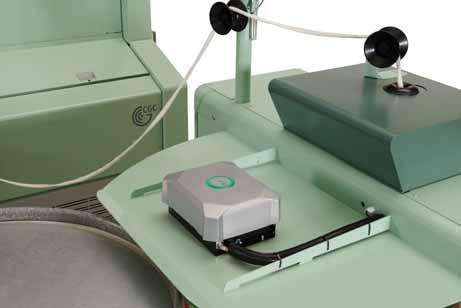
Gap Control regulates the carding gap — the distance between the flat and the cylinder — accurately to a few hundredths of a millimeter.
On each of the 116 flats in use, the system detects the distance between the needle tips and the cylinder clothing and monitors this without contact. Intelligent software calculates the ideal carding gap by factoring in further important influencing variables, such as the machine temperature. The electronic, centrally adjustable flat setting constantly keeps this gap in the ideal range.
Comparisons with and without the regulated carding gap have shown an increase in production of
up to 10 percent while maintaining the same quality level. This produces a card sliver quality that is up to 10percent better at the same production speed, which means fewer thin places, thick places and neps. Carding Gap Control also has the advantages of higher machine availability and consistent quality, depending on the individually defined limit values. The Rieter card C 80 can easily be retrofitted with this new function.
Artificial Intelligence Improves Raw Material Yield
Another innovation of the C 81 is Trash Level Monitor, which continuously monitors the contaminant content of the fiber tufts in the card inlet and the card sliver produced. This is important for customers who process natural fibers, such as cotton. The heart of this function is optical image processing with a new neural network developed by Rieter. Sensors in the card infeed and at the sliver coiling section deliver the data for this (See Figure 2).
Trash Level Monitor makes yarn quality predictable within a defined range. Artificial intelligence is used to determine whether the impurities in the card infeed and in the produced card sliver lie within the defined limit value. This makes it possible to take measures to make sure that the raw material is used ideally, even at this early stage of the process. Trash Level Monitor is also available in a modular version and can be retrofitted into existing Rieter carding systems. TW
34 JULY/AUGUST 2023 TextileWorld.com
SPINNING
Rieter’s new C 81 carding machine features intelligent sensors for enhanced production and quality.
Figure 1: Automatic adjustment of the carding gap
Figure 2: Trash Level Monitor at the sliver coiling section of the card
Charlotte, N.C.-based American Dornier Machinery Corp. appointed Oliver Meier executive vice president.

Germany-based Kelheim Fibres has named Mark von der Becke sales director; and Dr. Marina Crnoja-Cosic will add responsibilities for marketing and communications to her existing role of director of new business development. The company also announced Matthew North is retiring after almost 30 years with the company.
Glen Raven Inc., Burlington, N.C., has announced Bret Kelley as the new president of its Trivantage LLC distribution business, effective January 1, 2024. He will succeed Steve Ellington who is retiring.

Frankfurt, Germany-based Messe Frankfurt GmbH has named Magrit Herbeth director of the home textiles segment of Heimtextil, effective September 1, 2023. She joins Bettina Bär, who has been responsible for the home textiles segment since September 2022, in a dual leadership role.
At its Joint Annual Meeting with the Fiber Buyers Groups, the Southern Textile Association (STA) elected Charles Poston, Klüber Lubrication, president for a one-year term. Glen Raven’s Evans Tindal was elected first vice president; Nava Technologies’ Nathan Fisher was elected second vice president; Devin Steele was reelected secretary/treasurer; and Nathan Evans, The Seydel Companies, was named member-at-large. In addition, the following people were elected to the Board of Governors for four-year terms: Palmer Blair Jr., Dillon Yarn Corp.; Tim Manson, Meridian Specialty Yarn Group; Oliver Meier, American Dornier; Thomas Poston, Daikin America Inc.; Tina Rogers, Techmer PM; and Randy Smith, Mount Vernon Mills. During its meeting, STA also presented the following awards: The Steve Epps Lifetime Service Award to Lyman Hamrick, Hamrick Mills; David Clark Award to Ed Cox, Burlington Fabrics/Elevate Textiles; and the George Abbott Membership Award to Matt Llewellyn, Stoll by Karl Mayer.
Chris Carr was elected president of the Englandbased Society of Dyers and Colourists.
Spartanburg, S.C.-based Milliken & Company has appointed Patrick Keese executive vice president and president of the company’s floor covering business.
Lars Lidman has joined Sweden-based Coloreel as vice president, Global Sales.
Marco Salvadè, president of Italy-based Salvadè S.r.l., was appointed the new president of the Association of Italian Textile Machinery Manufacturers (ACIMIT).

Crowley, Jacksonville, Fla., has named Eric Cunningham vice president of Shared Services where he will focus on growing the company’s business relationships in the United States, Central America and other strategic markets.
The board of directors of Switzerlandbased Rieter Holding Ltd. has named Oliver Streuli CFO of Rieter Group effective August 1, 2023.
The American Cotton Shippers Association, Memphis, Tenn., promoted Shea Ishee to vice president.
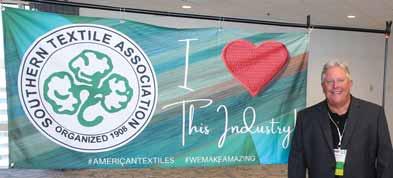
Timo Pape has joined New Zealand-based TMC Ltd. as director, Business Development Europe.
Switzerland-based industrial laundry company Gotli Labs AG has named Robert Tye COO.

Chad Altbaier and David Wang have been appointed co-CEOs of Standard Fiber, Foster City, Calif.
Cindy Kaufman was named vice president of marketing for Mannington Commercial, Calhoun, Ga.
New York City-based Stylitics has appointed Juliana Prather chief marketing officer.
Carhartt, Dearborn, Mich., has named Tara Roemke vice president of global merchandising. TW
Search the People archive on-line at TextileWorld.com. Textile World JULY/AUGUST 2023 35
People
Kelley
Keese
Salvadè
Streuli
Poston
Bulletin Board
The 3D orthogonally woven 3DMAT Quartz Material for the Orion Multi-Purpose Crew Vehicle compression pads developed by Bally,Pa.based Bally Ribbon Mills in conjunction with NASA was named the 2023 NASA Government Invention of the Year.

London-based Better Cotton has signed the United Nations Economic Commission for Europe Sustainability Pledge,an open-source suite of policy recommendations, guidelines and standards that enable industry players to authenticate their sustainability claims.
Milliken & Company, Spartanburg,S.C.,has expanded its Milliken Outdoor Fabrics line with the addition of a second collection named Outer Realm.

Germany-based STOLL, part of the Karl Mayer Group,has released a 208-page pattern compendium based on its flat knitting technique named “Color In Knitting: By Designers for Designers.”
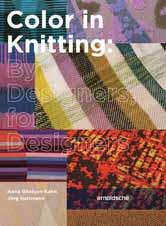
Cleveland-based Avient was issued the reexamination certificate for the principal patent applicable for Dyneema® Diamond Technology for cut-resistant yarn in the United States.The certificate confirms the patentability of 73 claims as amended or newly added in U.S.Patent No.8,302,374,entitled “Cut Resistant Yarn,A Process for Producing the Yarn and Products Containing the Yarn.”
Fuze Biotech,Salt Lake City,has changed its name to Fuze Technologies
The company also recently launched a new website to better highlight its growing suite of products and services.
Pakistan-based denim manufacturer Soorty has joined the CIRCULOSE® Supplier Network,a group of yarn and textile producers committed to ensuring a steady supply of Circulose fiber in the market created by Renewcell.
Uzbekistan-based Global Textile and the British Textile Manufacturers Association have joined the Zurich-based International Textile Manufacturers Federation as a corporate member and associate member respectively.
The Eurofins Consumer Products Assurance network of companies has joined the Sustainable Apparel Coalition as an affiliate member.
SDL Atlas,Rock Hill,S.C., reports its signature MMT® Moisture Management Tester has reached its 20th anniversary.
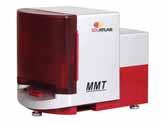
The CORDURA® Advanced Fabrics brand is celebrating 50 years as an ingredient in bags and packs.
Floor covering manufacturer Mannington Commercial,Calhoun,Ga.-based locations have achieved ISO 14001 recertification.
The Netherlands-based tech start-up company Aware™ was named the winner of the Avantex Fashion Pitch Grand Prize 2023 award for its traceability solution.
Trivantage,Burlington, N.C.,has updated its Sunbrella® Fusion Decorative Collection,which is typically updated every three years.Sunbrella Fusion is ideal for patio furniture, sofas,pillows and more, and the new designs were created to work alone or layer together.
Piana Nonwovens , Cartersville,Ga.,has received ISO 14001 Environmental Management Systems Certification from NSF International Strategic Registrations for its environmental management system.
Sun Chemical,Parsippany,N.J.,has received an EcoVadis Silver Rating for sustainability efforts across all its business regions.
Lion Brand Yarn Co., Lyndhurst,N.J.,has acquired Quince & Co.,a Maine-based premium hand knitting yarn company.
Sweden-based Material Exchange has launched the Deadstock Marketplace to provide an outlet for suppliers to sell deadstock materials to brands looking to reach new sustainability goals or in need of last minute items. TW
36 JULY/AUGUST 2023 TextileWorld.com
The Orion Multi-Purpose Crew Vehicle
The original design of SDL Atlas’ MMT®Moisture Management Tester
Trivantage has updated its Sunbrella®Fusion Decorative Collection of fabrics.
STOLL’s Color in Knitting book
SEPTEMBER
12-14 :Fiber & Filament Extrusion Fundamentals,organized by the Association of the Nonwoven Fabrics Industry (INDA) and the Nonwovens Institute (NWI),at NWI,NC State University,Raleigh,N.C. Visit inda.org.
21 :2023 Americas Apparel Producers’ Network (AAPN) Dallas Regional,Haggar Clothing Co.,Farmer’s Branch,Texas. Visit aapnetwork.net.


26-27:RISE® 2023,the Research,Innovation & Science for Engineered Fabrics conference, organized by INDA,Talley Student Union, Raleigh,N.C.Visit riseconf.net.
OCTOBER
9-10 :Filter Media Training Course, organized by INDA,Navy Pier,Chicago. Visit filtxpo.com/training.html.
10-12 :FiltXPO™ 2023,organized by INDA,Navy Pier,Chicago.Visit filtxpo.com.
24-27 :Intermediate Nonwovens Training Course,organized by INDA Headquarters,Cary,N.C.Visit inda.org.
26-27 :SYFAFall 2023 Conference, Sheraton Charlotte Airport Hotel, Charlotte,S.C.Visit thesyfa.org.
30-November 2 :CAMX 2023 — The Composites and Advanced Materials Expo,Georgia World Congress Center,Atlanta,Ga. Visit thecamx.org.
NOVEMBER
1-3 :Advanced Textiles Expo 2023, organized by the Advanced Textiles Association (ATA),Orange County Convention Center,Orlando,Fla. Visit advancedtextilesexpo.com.
13-16 :Hygienix™ 2023,organized by INDA,The Roosevelt New Orleans Hotel,New Orleans,La. Visit hygienix.org.
Textile World JULY/AUGUST 2023 37
Calendar WAREHOUSING BEAMING RECYCLING www.tirecordusa.com FIBERS & TEXTILES Tire Cord USA ‘Since 1989’ — Advertiser Index — 4M Plants..........................................................5 Advanced Textiles Expo 2023..............21 JOMAR SOFTCORP INTERNATIONAL...................................C4 Pailung.............................................................C2 Picanol................................................................7 CLASSIFIEDS CLASSIFIEDS Place Your Classified Ad Today! Call Julie Davis at (678) 522-0404 or e-mailjdavis@textileworld.com Place Your Classified Ad Today! Call Julie Davis at (678) 522-0404 or e-mailjdavis@textileworld.com Sign Up For Your FREE e-Newsletter & Digital Edition The latest textile news and online-only features delivered directly into your inbox. From Fishnet to Fine Lace Made in USA— Since 1982 TRICOT & RASCHEL — PRODUCTION IN THE USA Flat, Tubular, Fishnet, Geogrid, Erosion, Agricultural, Sports, Industrial, Medical, PPE, Ticking GERBER Laser CUTTING & SEWING Knitting Dyeing Finishing Coating to 230 INCHES 336-622-1000 • info@supertex-inc.com supertex-inc.com
Fabric Of The
Quality Month

 By Rachael S. Davis, Executive Editor
By Rachael S. Davis, Executive Editor
Blurring The Lines

WWorkwear fabric serves a purpose — to protect and in some cases make workers highly visible. To that end, the focus tends to fall heavily on the protective properties and not as much the comfort or style of a finished garment.

CONTACTS:
For more information, please visit the Tecasafe ® 360+ Virtual Experience at us.tencatefabrics.com/ tecasafe-360-plus.
Go online to TextileWorld.com for archived Quality Fabric articles.
Union City, Ga.-based TenCate Protective Fabrics (TCPF) is looking to change that narrative with the introduction of its Tecasafe® 360+ flame-resistant (FR) fabric. The fabric was developed with the idea of comfortable, but stylish clothing every day that can be worn on and off the job in mind.
According to Michael Laton, vice president of Global Strategy and Innovation, the TenCate Protective Fabrics name is synonymous with comfort and many of company’s comfort innovations come from trends it sees in consumer markets.
“The inspiration for Tecasafe 360+ was rooted in that same idea,” Laton said. “We asked ourselves questions like, ‘What do people like to wear when they aren’t at work?’ and ‘What comfort technologies from the consumer market haven’t made their way into FR apparel yet?’”
TCPF discovered a common theme was a desire for a stretch FR fabric. “However, for a long time, no fabric makers had been able to engineer a stretch solution for flame-resistant fabric that could withstand the extreme environments and laundering conditions that industrial FR workwear undergoes on a daily basis,” Laton said.
Tecasafe 360+ features XLANCE® stretch fiber from Italy-based fiber producer XLANCE S.r.l. This polyolefinbased elastic yarn features crystallizable ethylene and non-crystallizable 1-octene
monomers. In the solid state, the copolymers build an elastomeric network. Crystallites reinforce the structure acting as physical crosslinks to connect the flexible amorphous polymer chains. The fiber can withstand temperatures of up to 220°C without compromising its integrity and stretch performance, which makes it suitable for high-temperature textile processes.
The woven Tecasafe 360+ fabric comprises a blend of XLANCE with aramid, modacrylic and lyocell; and has a nominal weight of 8.5 ounces per square yard. Navy blue is the standard color available, and the inherent FR protection is maintained even in industrial laundering conditions, according to TCPF.





The fabric also has been certified by the National Fire Protection Association (NFPA) to standard NFPA 1975 for station uniforms for fire and emergency services as well as NFPA 2112 for protection from flash fire; and ASTM International standard ASTM 1506 for protection from flame resistance and electrical arc.
The fabric was recently launched in the Americas, Europe and Asia-Pacific making it TCPF’s first global product launch. To tie in with the launch, the company even organized the “Make It [Work] Wear Fashion Challenge,” where students from around the globe were tasked with designing a new type of FR garment that redefines workwear.
“The introduction of Tecasafe 360+ is a watershed moment for the FR industry, and we’re incredibly excited to offer this new level of comfort to the hardworking people we serve,” Laton added. TW
38 JULY/AUGUST 2023 TextileWorld.com
TenCate Protective Fabrics’ Tecasafe® 360+ workwear fabric aims to blur the lines between workwear and leisurewear.
read / share / engage TextileWorld.com website / magazine / e-newsletter Subscribe to Textile World for complete coverage of the U.S. and global textile manufacturing industry — the latest technologies, applications, regulations and trends. Now you can receive your Textile World magazine anywhere you go. Print advertisers receive additional reach and linking with free inclusion in Digital Editions. + New Digital Edition Digital Editions Are Here Add Your Digital Delivery Today



